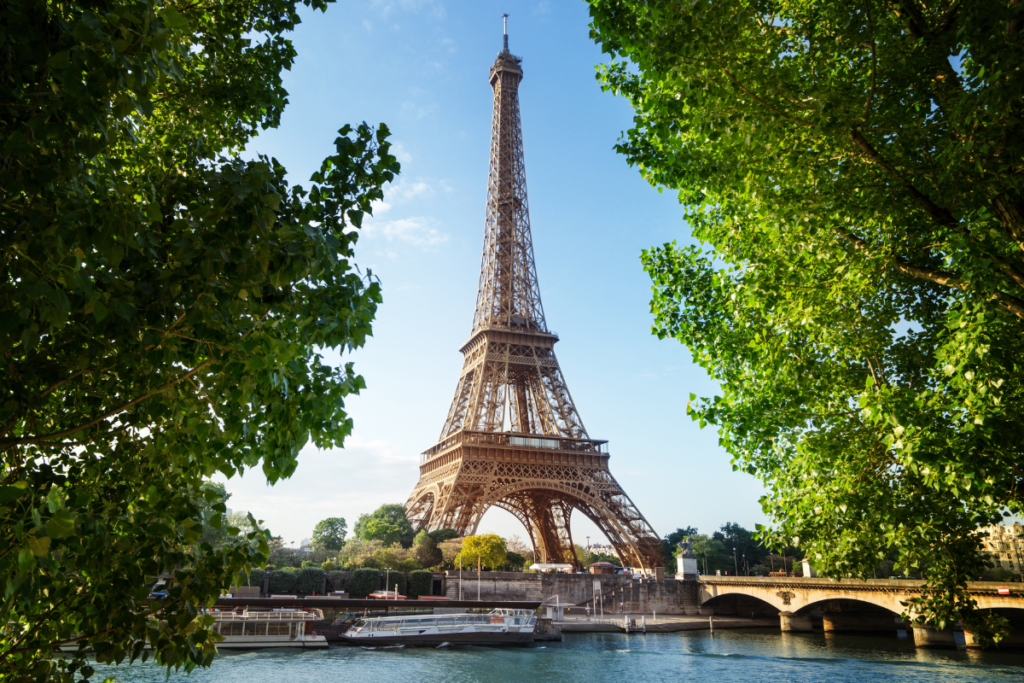
1. Paris, France
Paris, France is often considered the most romantic city in the world. It is known as the ‘City of Light’ and is renowned for its stunning architecture, world-class art, and culinary excellence. The city’s iconic landmarks, including the Eiffel Tower, Notre-Dame Cathedral, and the Louvre Museum, are symbols of its rich history and cultural heritage. Paris is renowned for its beautiful neighbourhoods, such as the artsy Montmartre and the chic Marais, each offering a unique insight into Parisian life. The Seine River, with its picturesque bridges and bookstalls, adds to the city’s allure. Parisian cuisine is an experience in itself, with cosy bistros and Michelin-starred restaurants serving traditional French dishes and international delicacies. Paris boasts a fashion scene that is unparalleled, with luxury boutiques and haute couture houses lining the streets of the Faubourg Saint-Honoré and the Champs-Élysées. A visit to Paris is a journey through a city where beauty, culture, and history intersect at every corner.

2. Rome, Italy.
Rome is a city full of history, art, and culture. As the capital of Italy and the former center of the Roman Empire, it boasts an incredible array of ancient ruins, including the Colosseum, the Roman Forum, and the Pantheon. The city is also home to the Vatican City, an independent city-state within Rome that houses the magnificent St. Peter’s Basilica and the Sistine Chapel, famous for Michelangelo’s breathtaking frescoes. Rome’s historic streets and piazzas, such as Piazza Navona and Campo de’ Fiori, are lively gathering spots filled with charming cafes and street performers. The city’s culinary scene is a delight for food lovers, offering traditional Roman dishes like carbonara and amatriciana. Rome’s blend of ancient history and vibrant modern life makes it a captivating destination that leaves an indelible mark on all who visit.
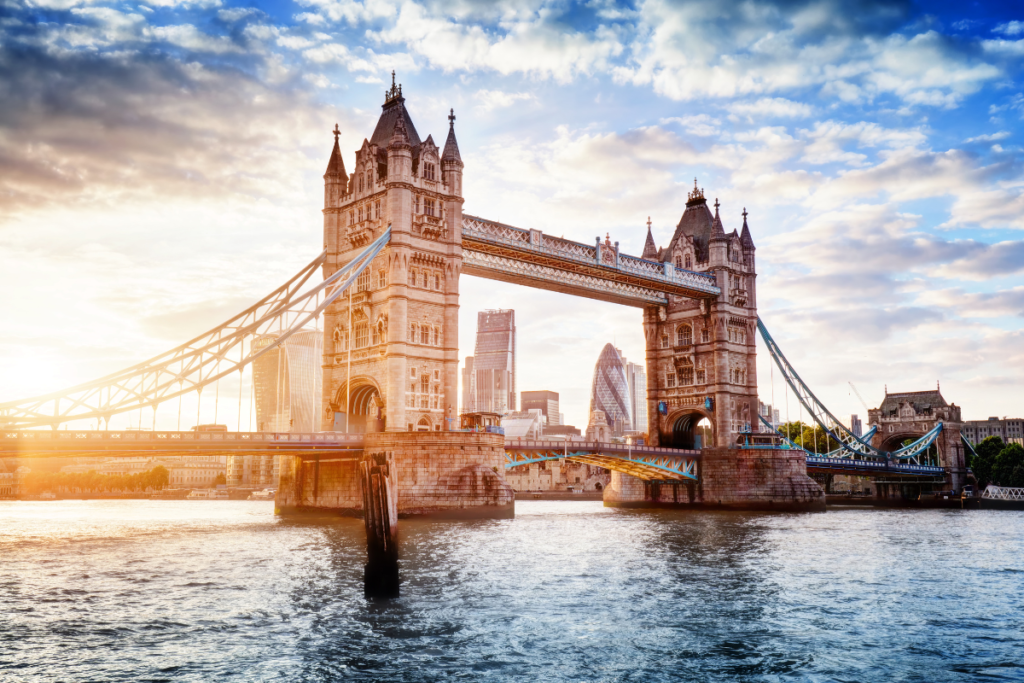
3. London, England
London, the capital of England and the United Kingdom, is a vibrant city that blends centuries of history with cutting-edge culture. It is home to iconic landmarks such as the Tower of London, Buckingham Palace, and the British Museum. The Houses of Parliament and the Big Ben clock tower stand as symbols of London’s political heritage, while the London Eye offers breathtaking views of the city’s skyline. London’s diverse neighbourhoods, ranging from the trendy streets of Shoreditch to the elegant squares of Notting Hill, each possess their own unique character and charm. The city’s culinary scene is as diverse as its population, offering a wide array of international cuisines. London’s West End is renowned for its world-class theatre productions, and the city’s many parks, including Hyde Park and Regent’s Park, provide peaceful retreats from the urban hustle and bustle. London is a city that captivates with its blend of history, culture, and cosmopolitan flair.
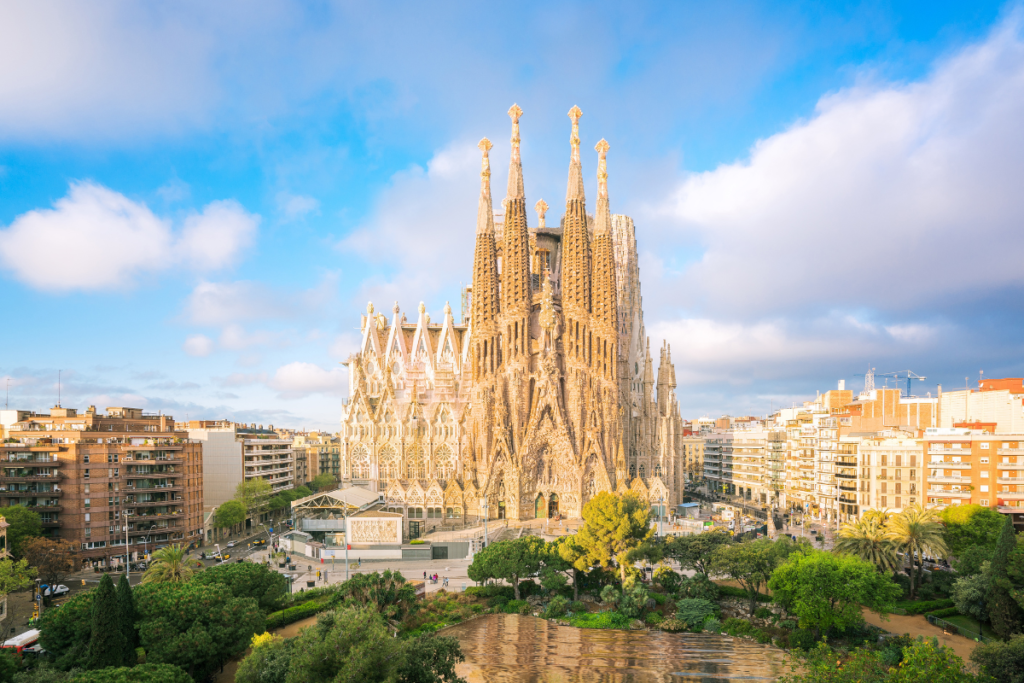
4. Barcelona, Spain
Barcelona is the beautiful and vibrant capital of Catalonia, a city that offers a unique blend of history, art and architecture. Situated between the Mediterranean Sea and the mountains, Barcelona boasts Modernist landmarks designed by Antoni Gaudí, including the Sagrada Família, Park Güell, and Casa Batlló. The Gothic Quarter, with its narrow medieval streets, offers a journey back in time, culminating in the stunning Barcelona Cathedral. Barcelona is a vibrant city with lively boulevards, such as Las Ramblas, that are filled with street performers, markets, and outdoor cafes. The city’s beaches, including Barceloneta, provide a perfect spot to relax and enjoy the sea breeze. Barcelona’s culinary scene is renowned for its tapas bars and innovative restaurants, showcasing the best of Catalan cuisine. Barcelona’s lively nightlife, cultural festivals, and artistic heritage make it a dynamic and captivating destination that enchants visitors with its energy and creativity.
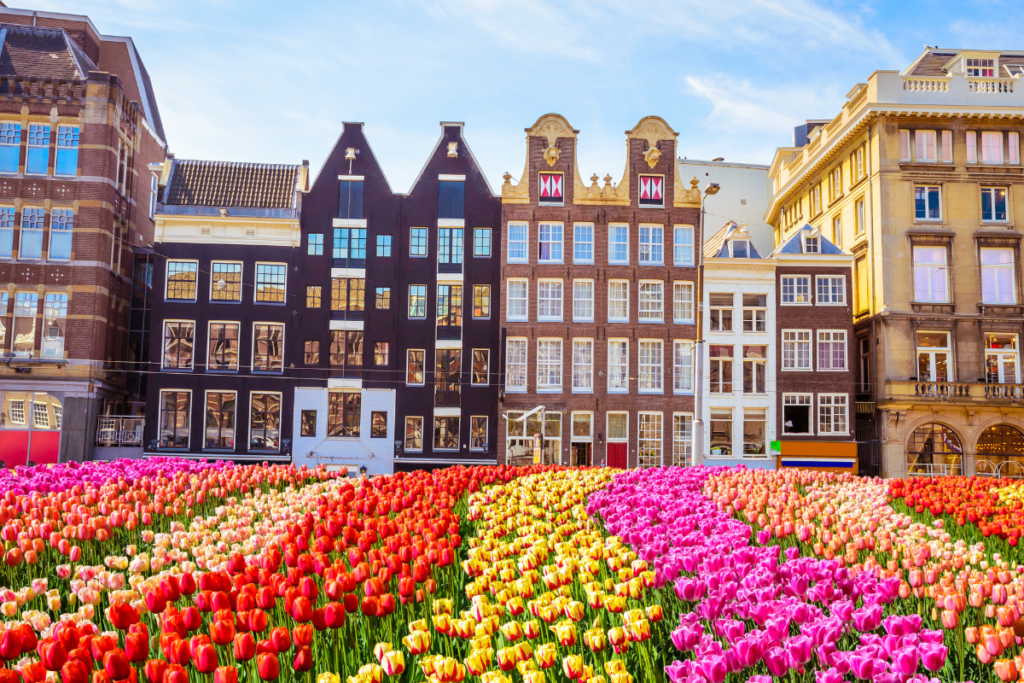
5. Amsterdam, Netherlands
Amsterdam, the capital of the Netherlands, is renowned for its picturesque canals, historic buildings, and tolerant culture. The city’s network of waterways, lined with charming narrow houses and adorned with countless bridges, creates a unique and enchanting atmosphere. Amsterdam’s rich artistic heritage is showcased in its world-class museums, such as the Rijksmuseum, the Van Gogh Museum, and the Anne Frank House. Amsterdam’s vibrant neighbourhoods, such as Jordaan and De Pijp, offer a combination of trendy boutiques, cosy cafes, and lively markets. The city is also renowned for its open-mindedness, with its Red Light District and cannabis coffee shops contributing to its distinctive character. The city’s green spaces, such as Vondelpark, provide a peaceful escape from the urban buzz. Amsterdam’s blend of historical charm, cultural treasures, and contemporary flair makes it a captivating destination for all visitors.
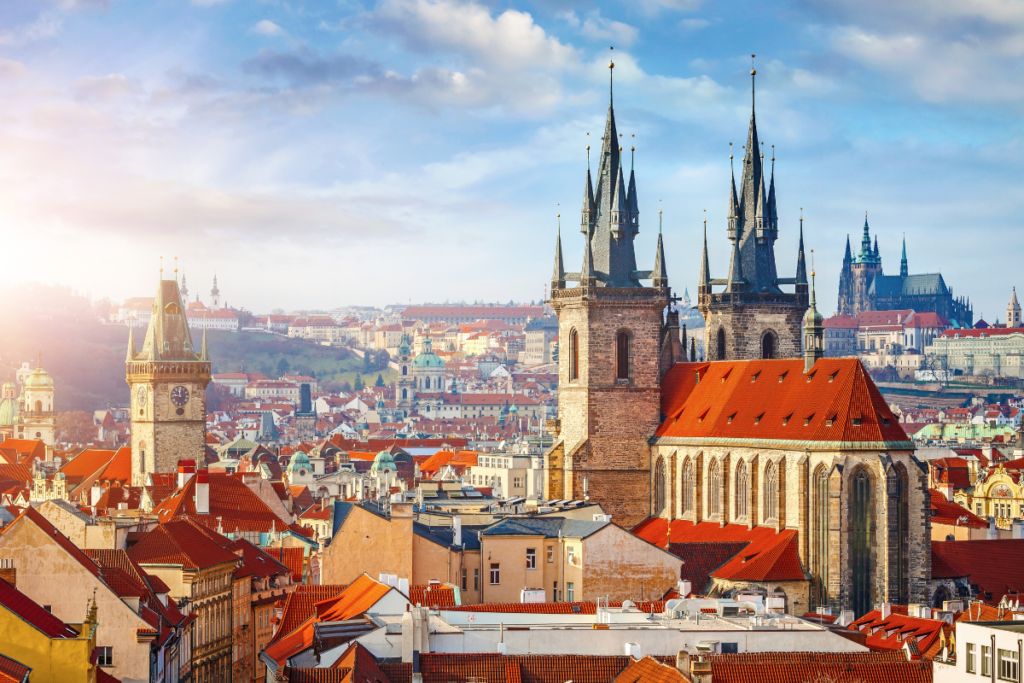
6. Prague, Czech Republic
Prague, the capital of the Czech Republic, is known as the ‘City of a Hundred Spires’ due to its numerous historic churches and towers. The city’s well-preserved medieval architecture creates a fairy-tale ambiance. The Charles Bridge and Prague Castle are iconic symbols of its rich history. The Old Town Square, with its Astronomical Clock and colourful baroque buildings, is a hub of activity and a testament to the city’s artistic heritage. Prague’s narrow cobblestone streets are filled with hidden courtyards, quaint cafes, and traditional beer halls that serve Czech pilsners. The city’s cultural scene is vibrant, with numerous theaters, galleries, and music venues showcasing classical and contemporary performances. The Vltava River, which winds through the city, offers picturesque views and boat cruises, adding to Prague’s romantic allure. Prague’s combination of history, art, and vibrant atmosphere makes it an enchanting destination for travellers seeking a taste of Central European charm.
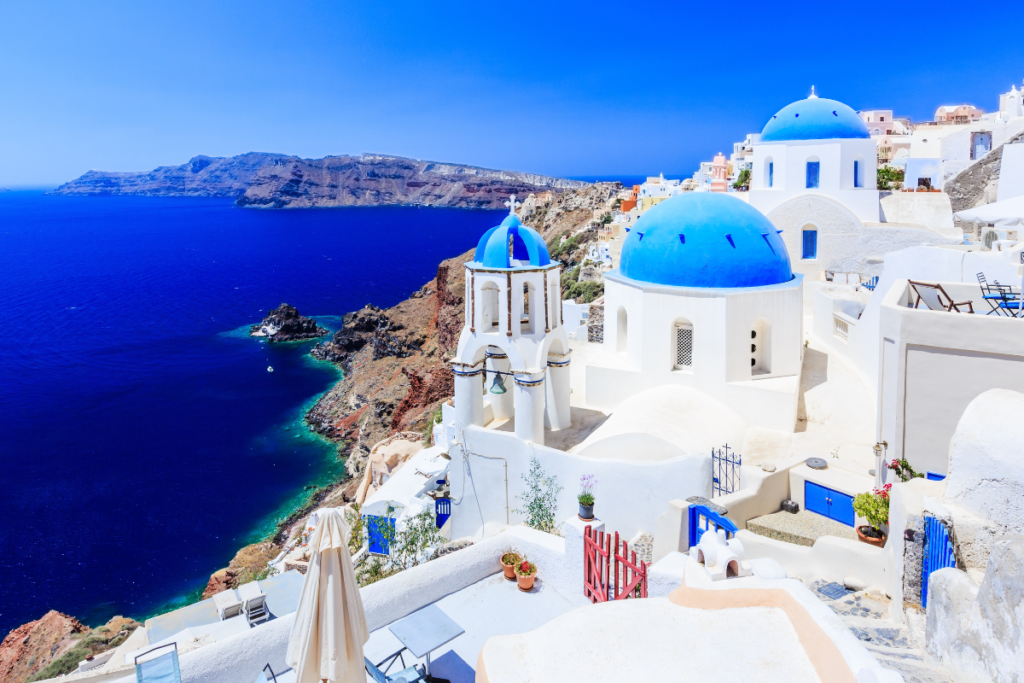
7. Santorini, Greece
Santorini is a stunning volcanic island located in the Aegean Sea and is one of Greece’s most enchanting destinations. Renowned for its dramatic cliffs, white-washed buildings, and mesmerizing sunsets, Santorini exudes romance and beauty. The island’s iconic villages, such as Oia and Fira, cling to the caldera’s edge, offering breathtaking views of the turquoise sea and the caldera below. Santorini’s beaches, such as the Red Beach and Kamari, are unique due to their volcanic sand and crystal-clear waters. The island’s rich history is on display at sites such as Akrotiri, a well-preserved Minoan settlement. A wine-tasting tour is a must for any visitor to sample the distinctive wines produced by Santorini’s vineyards, thanks to the volcanic soil. The local cuisine, which features fresh seafood and traditional Greek dishes, is a delight for the senses. Santorini’s enchanting landscape, combined with its rich history and vibrant culture, makes it an unforgettable destination that captures the hearts of all who visit.

8. Venice, Italy
Venice, also known as ‘La Serenissima,’ is a unique city built on a lagoon in the Adriatic Sea. Its intricate network of canals, historic bridges, and stunning architecture make it enchanting. The Piazza San Marco, home to the magnificent St. Mark’s Basilica and the Campanile, is the heart of Venice. A gondola ride through the city’s winding canals offers a unique perspective of its grand palazzos and romantic ambiance. Venice’s art, culture, and cuisine are showcased in its numerous museums, galleries, and restaurants. The Peggy Guggenheim Collection and the Doge’s Palace are just a few examples. Traditional Venetian glass and intricate lace can be found in the shops of Murano and Burano islands. Local cuisine includes dishes such as risotto al nero di seppia and cicchetti, perfect for sampling the city’s flavours. Despite the challenges posed by rising waters and tourism, Venice remains a must-visit destination.

9. Berlin, Germany
Berlin, the capital of Germany, is a city with a rich history and a vibrant cultural scene. From the remnants of the Berlin Wall to the iconic Brandenburg Gate, the city bears witness to its tumultuous past while embracing a dynamic and creative present. The Reichstag building, with its stunning glass dome, offers panoramic views of the city and a glimpse into Germany’s political center. Berlin has a variety of neighbourhoods, including trendy Kreuzberg and historic Mitte, which are full of art galleries, hip cafes, and bustling markets. The city’s nightlife is legendary, with numerous clubs, bars, and music venues catering to all tastes. Berlin is also a haven for history buffs, with museums such as the Jewish Museum and the Topography of Terror documenting its complex heritage. Berlin’s green spaces, including the Tiergarten and Tempelhofer Feld, offer a tranquil retreat from city life. The city’s resilience, creativity, and openness make it an intriguing destination for travellers looking to discover a city that is constantly reinventing itself.
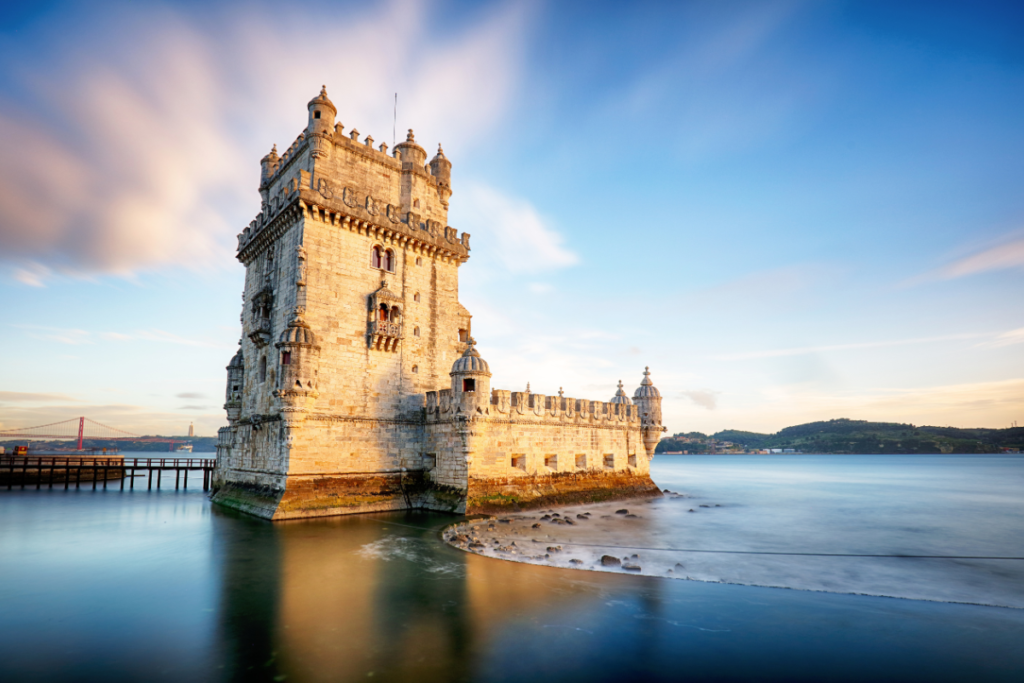
10. Lisbon, Portugal
Lisbon is the sun-kissed capital of Portugal, perched on seven hills overlooking the Tagus River. Its cobbled streets, historic trams, and pastel-colored buildings create a picturesque setting that captivates visitors. The city’s most iconic landmark, the Belém Tower, stands as a testament to Portugal’s Age of Discoveries. Nearby, the Jerónimos Monastery, with its intricate Manueline architecture, is a UNESCO World Heritage site. Lisbon’s neighbourhoods are vibrant and diverse, each offering a unique glimpse into the city’s rich cultural tapestry. For example, Alfama is known for its Fado music, while Bairro Alto is famous for its lively nightlife. Additionally, Lisbon is renowned for its culinary delights, including the famous pastéis de nata (custard tarts) and fresh seafood dishes. The city’s trams, especially Tram 28, provide a nostalgic ride through the historic quarters, offering stunning views and a sense of adventure. Lisbon is a captivating destination that embodies the spirit of Portugal with its warm climate, welcoming atmosphere, and blend of traditional and contemporary.
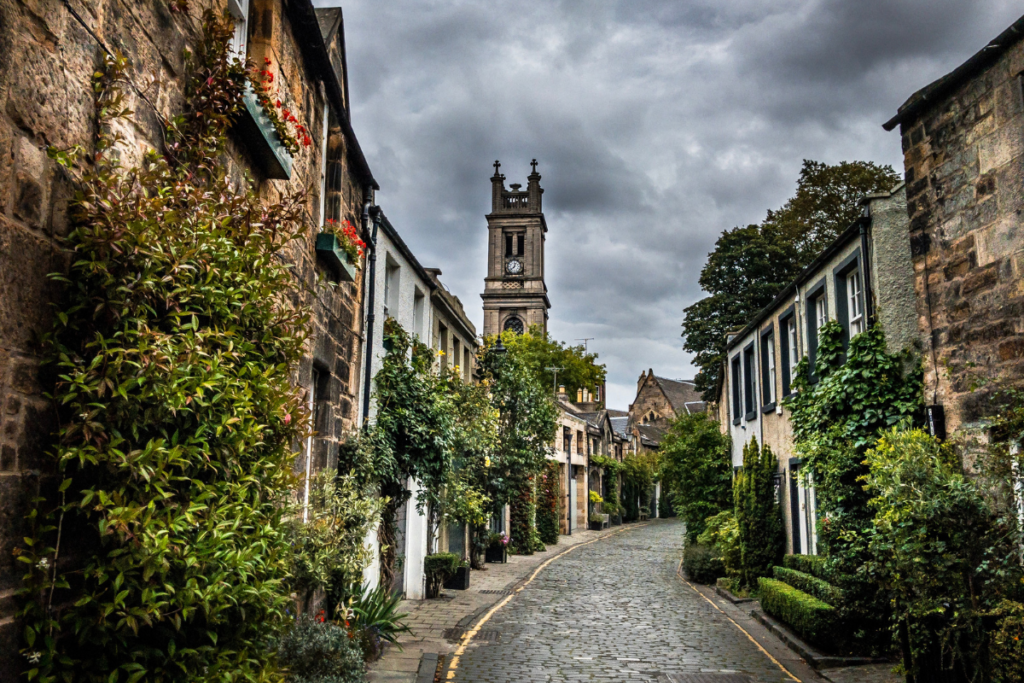
11. Edinburgh, Scotland
Edinburgh, the historic capital of Scotland, is a city of striking contrasts. Medieval relics, Georgian grandeur, and modern life blend seamlessly. Dominating the skyline is Edinburgh Castle, perched atop an ancient volcanic rock. It houses Scotland’s crown jewels and the Stone of Destiny. The Royal Mile, a cobbled street leading from the castle to the Palace of Holyroodhouse, is lined with historic buildings, shops, and pubs. Edinburgh’s New Town is a masterpiece of Georgian architecture, boasting elegant streets and squares. The city is renowned for its vibrant cultural scene, hosting the world-famous Edinburgh International Festival and the Fringe, the world’s largest arts festival. Arthur’s Seat, an extinct volcano, provides a panoramic view of the city and is a popular spot for hikes. Edinburgh’s rich literary heritage, cozy pubs, and warm hospitality make it a city that captivates the hearts of all who visit.

12. Florence, Italy
Florence, the birthplace of the Renaissance, is a city that has had a profound impact on art, architecture, and culture. Located in the heart of Tuscany, its historic centre is a UNESCO World Heritage site, adorned with masterpieces such as the Duomo, with its iconic red-tiled dome designed by Brunelleschi, and the adjacent Giotto’s Campanile. The Uffizi Gallery houses an unparalleled collection of Italian Renaissance art, including works by Botticelli, Michelangelo, and Leonardo da Vinci. The Ponte Vecchio is an ancient bridge that spans the Arno River and is lined with jewelry shops, adding to the city’s romantic charm. Florence is renowned for its leather goods, artisanal craftsmanship, and culinary delights, including the famous Florentine steak. The city’s narrow streets, lively piazzas, and stunning palaces invite exploration, revealing the enduring legacy of the Medici family and the city’s role as a beacon of creativity and beauty.
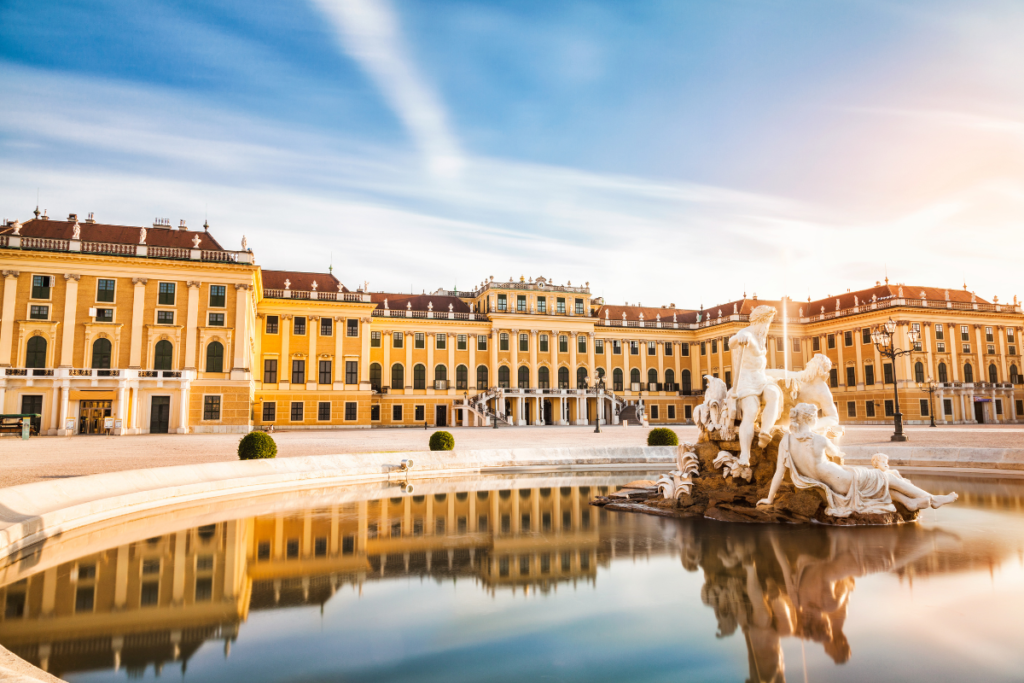
14. Vienna, Austria
Vienna, the capital of Austria, is an elegant city with a rich cultural heritage. It is known as the ‘City of Music’ and has been home to legendary composers such as Mozart, Beethoven, and Strauss. Today, the classical music scene is still vibrant with world-renowned institutions like the Vienna Philharmonic and the State Opera. The city’s architectural landscape reflects its imperial past, with grand palaces such as Schönbrunn and the Hofburg showcasing baroque opulence. The Ringstrasse is a grand boulevard that encircles the historic city center and is lined with monumental buildings, such as the Rathaus (City Hall) and the Austrian Parliament. Vienna is also renowned for its coffee house culture, which is a UNESCO Intangible Cultural Heritage. Here, locals and visitors alike can enjoy traditional pastries and coffee in elegant and historic settings. Vienna is a must-visit destination in Europe due to its impressive art collections housed in museums like the Belvedere and the Albertina, as well as its vibrant cultural scene. Additionally, the Prater amusement park offers a more lighthearted experience. The city’s blend of artistic and architectural marvels is truly unique.
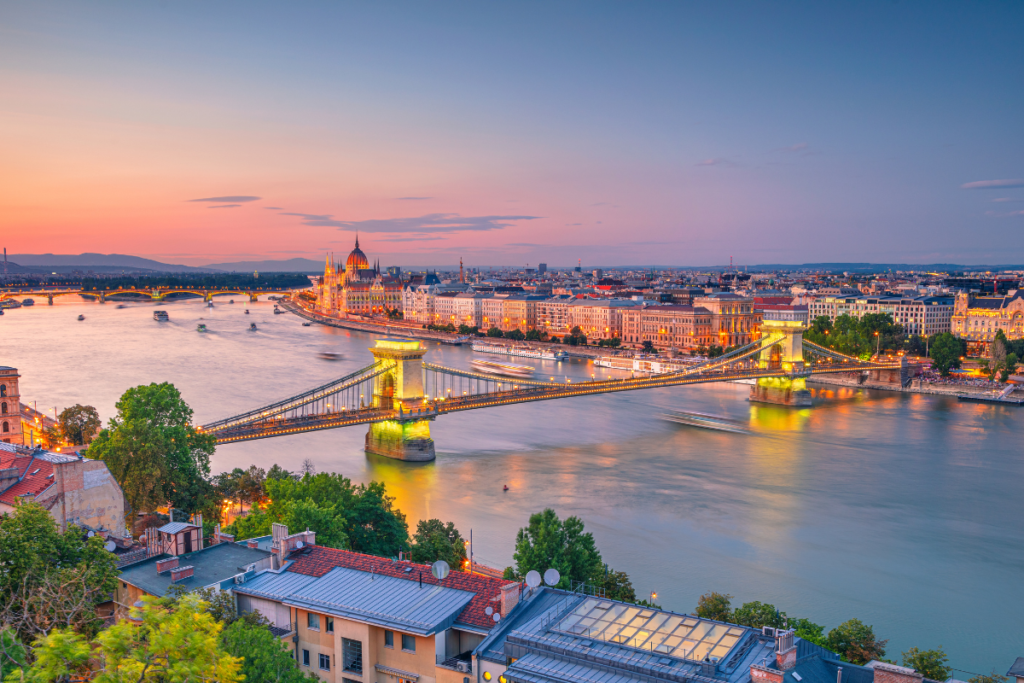
15. Budapest, Hungary
Budapest, the capital of Hungary, is a city divided by the Danube River, yet united in its stunning beauty and rich history. The city is renowned for its thermal baths, with the Széchenyi Bath being one of the largest and most famous in Europe. The Buda side of the city is dominated by the historic Castle Hill, where the Buda Castle, Matthias Church, and Fisherman’s Bastion offer panoramic views of the city and the river. Pest is the bustling urban center across the river, home to the iconic Hungarian Parliament Building, St. Stephen’s Basilica, and the grand Andrássy Avenue, leading to Heroes’ Square and the City Park. Budapest’s ruin pubs, a unique aspect of its nightlife, are located in abandoned buildings and offer a vibrant and eclectic atmosphere. The city’s culinary scene is delightful, with traditional Hungarian dishes like goulash and langos. Budapest’s combination of historical sophistication, thermal spas, and vibrant cultural scene makes it a captivating destination in Central Europe.

16. Copenhagen, Denmark
Copenhagen, the capital of Denmark, is a city that embodies Scandinavian cool with its mix of contemporary design, historic charm, and sustainable living. The city’s waterfront features the iconic statue of the Little Mermaid, inspired by Hans Christian Andersen’s fairy tale. Copenhagen’s colourful Nyhavn harbour is lined with historic townhouses, bars, and restaurants, providing a picturesque setting for a leisurely stroll or a canal boat tour. Copenhagen is famous for its culinary scene, particularly its New Nordic cuisine, which is exemplified by the world-renowned restaurant Noma. Cycling is a way of life in the city, and the extensive network of bike lanes makes it easy to explore attractions such as the Tivoli Gardens, an enchanting amusement park, and the innovative architecture of the Royal Danish Playhouse. Copenhagen’s dedication to sustainability is apparent in its verdant areas, pristine harbor baths, and projects such as the Copenhill waste-to-energy facility, which features a ski slope on its roof. The city’s combination of historical refinement, modern design, and environmental awareness renders it an exemplar metropolis for the 21st century.
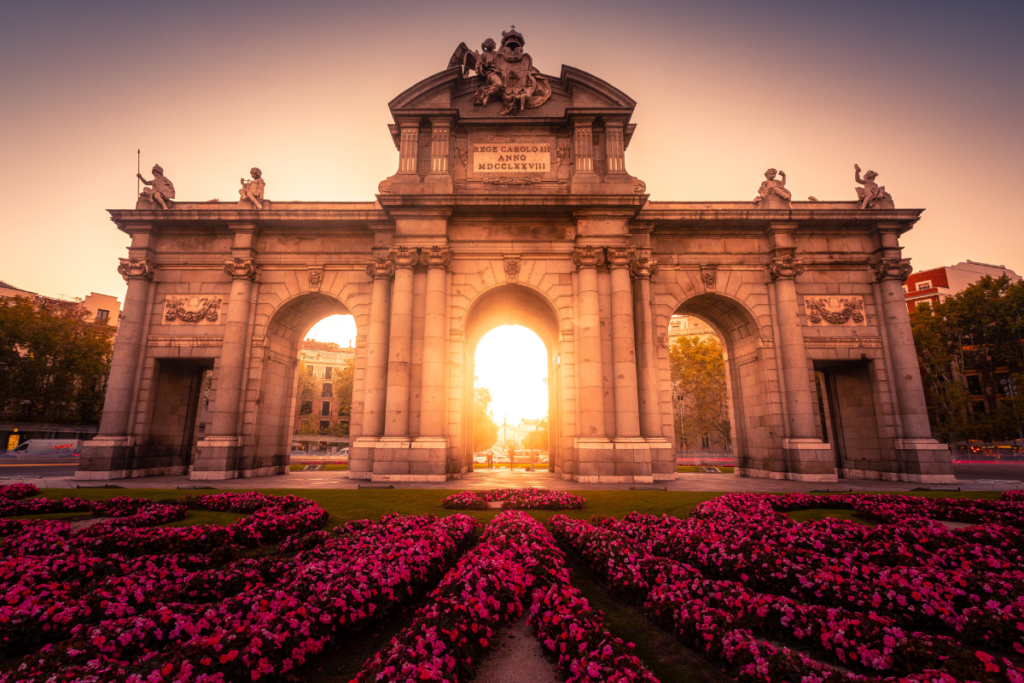
17. Madrid, Spain
Madrid, the capital of Spain, is a city where tradition and modernity coexist harmoniously. The grand Plaza Mayor, located at the heart of the city, is a symbol of Madrid’s rich history. It is surrounded by narrow streets filled with tapas bars and lively plazas. The Royal Palace of Madrid, with its opulent interiors, stands as a testament to the city’s royal heritage. Madrid is a cultural powerhouse, boasting the renowned Prado Museum, which houses an extensive collection of European art, and the Reina Sofía Museum, where Picasso’s Guernica is displayed. The city’s love for art extends to its streets, with vibrant murals and street art adding colour to its neighbourhoods. Madrid’s nightlife is legendary, with a plethora of bars, clubs, and flamenco venues that come alive after sunset. Madrid offers a peaceful escape with beautiful gardens and a boating lake in its green spaces, such as Retiro Park. The city’s passion for football is palpable, with the Santiago Bernabéu Stadium being a pilgrimage site for Real Madrid fans. Madrid captures the essence of Spanish spirit and hospitality with its lively atmosphere, cultural treasures, and culinary delights.
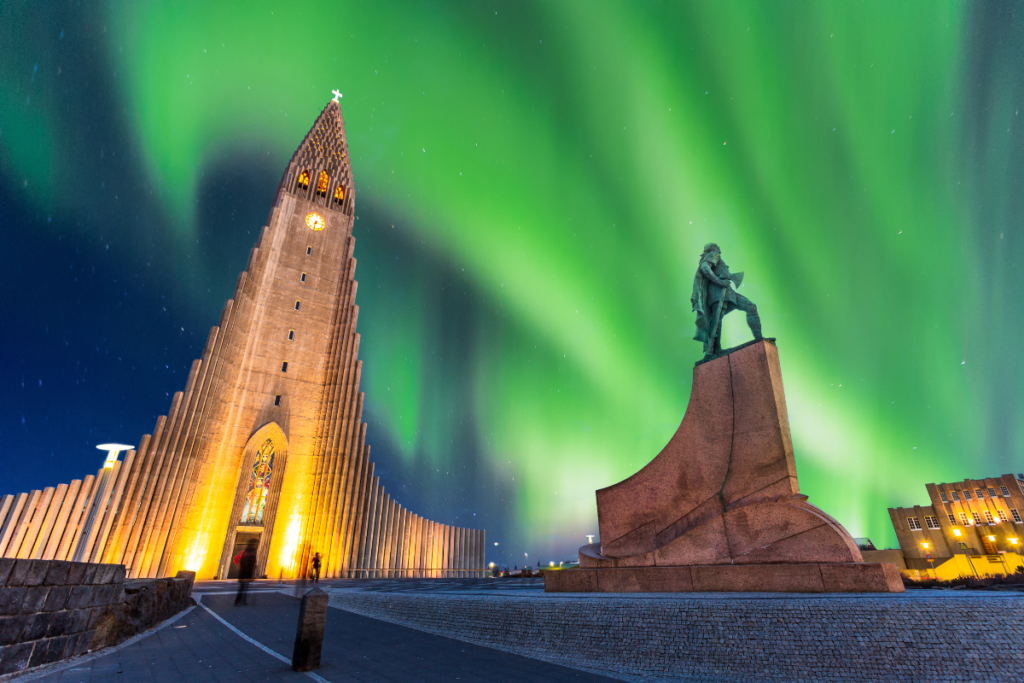
18. Reykjavik, Iceland
Reykjavik is the northernmost capital in the world. It blends the energy of a cosmopolitan center with the serene beauty of the Icelandic landscape. Reykjavik is known for its colorful houses and artistic vibe. It is also a gateway to Iceland’s natural wonders, including geysers, waterfalls, and volcanic landscapes. The city’s most iconic landmark is the Hallgrímskirkja church, whose design is inspired by the basalt lava flows of Iceland’s landscape. The Harpa Concert Hall boasts a stunning glass facade and is a symbol of modern Reykjavik. It serves as a hub for cultural events. Reykjavik is renowned for its vibrant nightlife, with a variety of bars and clubs that remain open until the early hours. The culinary scene in Reykjavik is a delight, with a focus on fresh seafood and local ingredients. The city’s commitment to sustainability is evident in its use of geothermal energy and its efforts to preserve the pristine Icelandic environment. Reykjavik provides an exceptional combination of urban living and scenic splendour, making it an essential destination for those in search of adventure and cultural immersion.
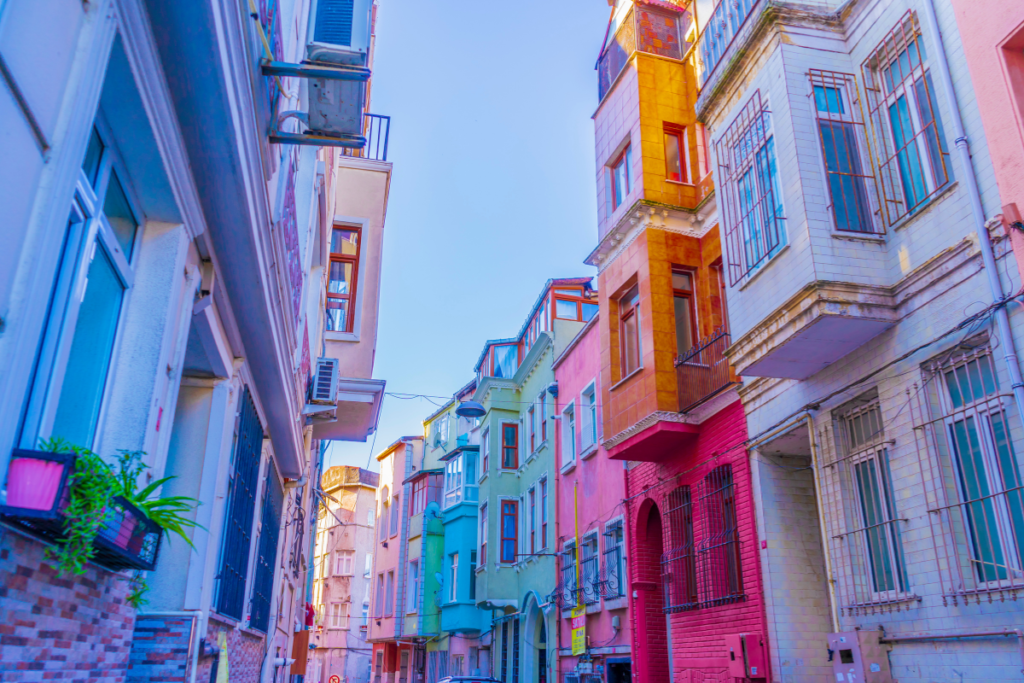
19. Istanbul, Turkey
Istanbul is a city that spans two continents, Europe and Asia, and is a melting pot of cultures, history, and architecture. This unique metropolis, which was once the capital of the Byzantine and Ottoman empires, has a skyline dotted with minarets and domes. The iconic Hagia Sophia has stood as a symbol of the city’s diverse heritage for centuries. Another architectural marvel is the Blue Mosque, with its six minarets and exquisite interior. The Grand Bazaar is one of the world’s largest and oldest covered markets, offering a labyrinth of shops selling everything from spices to jewelry. To experience stunning water views of the city, take a ferry ride across the Bosphorus Strait. Istanbul’s culinary scene reflects its multicultural history, with dishes such as kebabs, mezes, and baklava. Its vibrant street life, historic hammams, and mesmerizing Whirling Dervishes add to its allure. Istanbul is a captivating city that blends ancient and modern, East and West, and bridges continents.
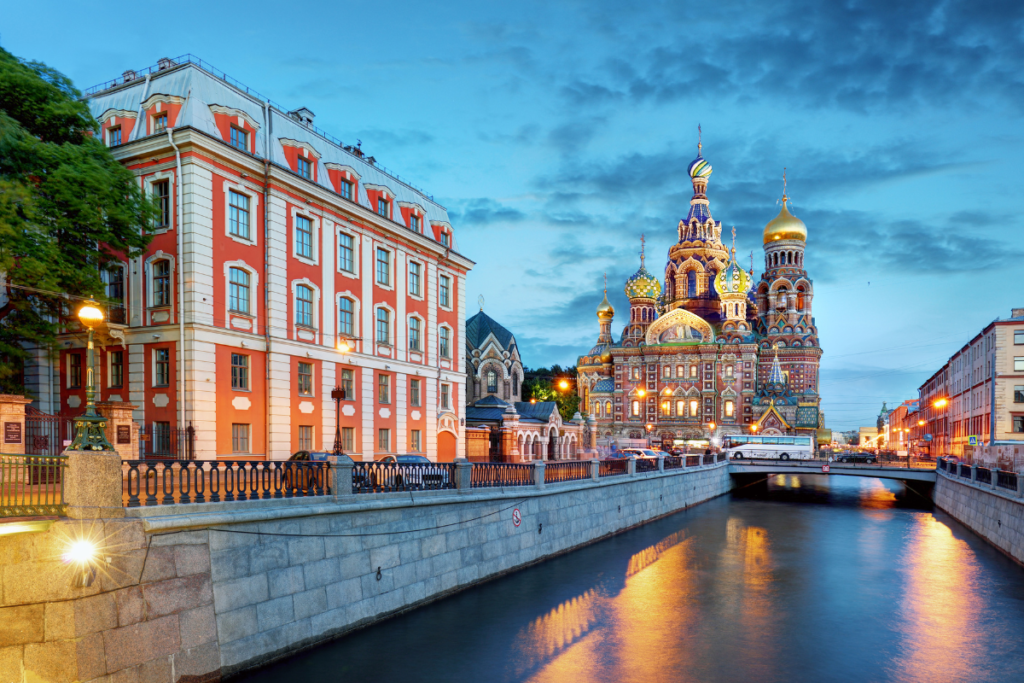
20. St. Petersburg, Russia
St. Petersburg, known as the cultural capital of Russia, was founded by Tsar Peter the Great in 1703. Its historic center, a UNESCO World Heritage site, features opulent palaces, majestic cathedrals, and ornate bridges spanning the Neva River. The Winter Palace, which now houses the world-renowned Hermitage Museum, displays a vast collection of art, from Renaissance masterpieces to modern works. The Church of the Savior on Spilled Blood is a symbol of the city’s rich architectural heritage, with its colourful onion domes and intricate mosaics. St. Petersburg is renowned for its ‘White Nights’, a period in summer when the city experiences almost continuous daylight, celebrated with festivals and cultural events. St. Petersburg boasts a rich literary heritage, exemplified by the works of Dostoevsky and Pushkin. The city’s historical tapestry is further enriched by landmarks such as the Bronze Horseman statue and the Peter and Paul Fortress. The world-class ballet and opera companies, particularly the Mariinsky Theatre, are a testament to Russia’s artistic traditions. St. Petersburg is a captivating destination that blends Western European and Russian influences, offering a glimpse into the soul of Russia.
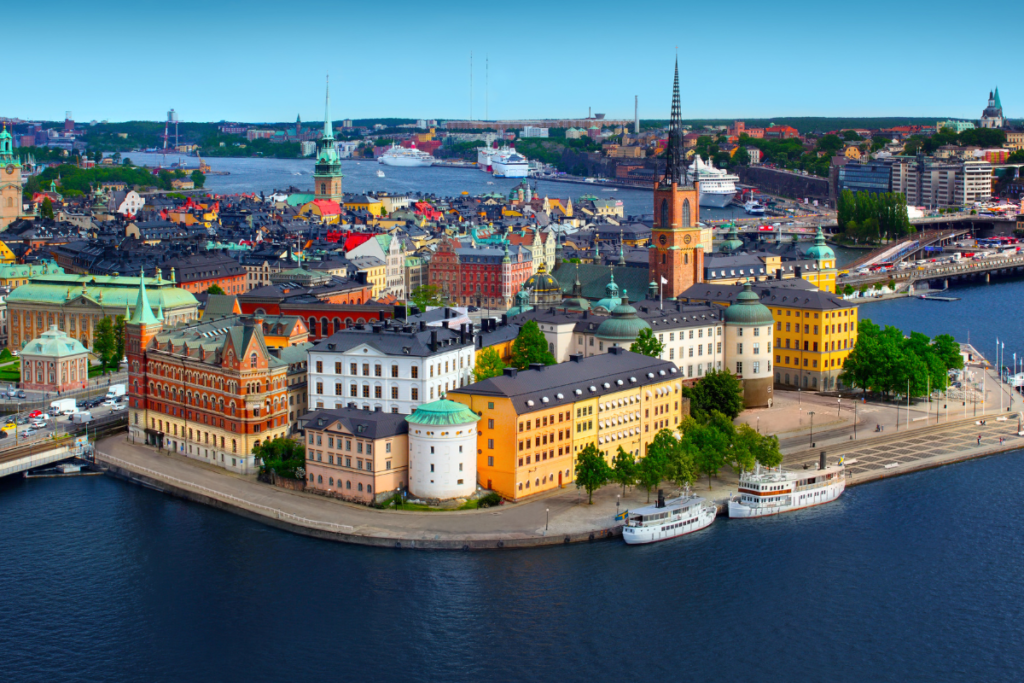
21. Stockholm, Sweden
Stockholm, the capital of Sweden, is a city that embodies Scandinavian elegance and innovation. It is spread across 14 islands connected by over 50 bridges and is often referred to as the ‘Venice of the North.’ The city’s historic heart, Gamla Stan, is a labyrinth of cobblestone streets, medieval buildings, and the majestic Royal Palace. Stockholm is renowned for its design, from the modernist lines of its architecture to the sleek products of its famous brands like IKEA and Volvo. Stockholm’s commitment to sustainability is evident in its clean waterways, green spaces, and eco-friendly initiatives. The city boasts several museums that offer insights into Sweden’s rich history and culture, including the Vasa Museum, home to a 17th-century warship, and the open-air museum Skansen. The culinary scene in Stockholm is a blend of traditional Swedish flavors and international influences, with an emphasis on fresh, locally sourced ingredients. Stockholm’s cultural vibrancy is enhanced by its vibrant arts scene, which includes music, theatre, and contemporary art. The city’s unique blend of historical charm, modern design, and natural beauty makes it a must-visit destination in Scandinavia.

22. Bruges, Belgium
Bruges, also known as the ‘Venice of the North’, is a medieval Belgian city that captivates visitors with its picturesque canals, cobblestone streets, and well-preserved architecture. The city’s main attraction is the Belfry of Bruges, a towering medieval bell tower that provides panoramic views of the city’s rooftops and spires. The Markt square, surrounded by historic buildings and bustling with cafes, is a lively gathering spot. Bruges is renowned for its lace-making tradition, with dedicated shops and museums. The city’s chocolate shops offer a variety of exquisite Belgian chocolates for connoisseurs. The serene canals that wind through Bruges invite leisurely boat tours, providing a unique perspective on the city’s Gothic and Renaissance architecture. The Groeningemuseum exhibits a collection of Flemish and Belgian art, including works by Jan van Eyck and Hans Memling. The charm of Bruges lies in its fairy-tale atmosphere, making it a romantic and captivating destination that feels like a step back in time.

23. Athens, Greece
Athens, the capital of Greece, is a city where ancient history and contemporary life converge. The Acropolis, a citadel on a rocky outcrop, stands at the heart of Athens and is home to some of the most iconic landmarks of antiquity, including the Parthenon, the Erechtheion, and the Temple of Athena Nike. The Acropolis Museum and the National Archaeological Museum offer fascinating insights into Greek civilization and art. The historic neighbourhood of Plaka, with its narrow streets and neoclassical buildings, is a charming area to explore, offering a glimpse into the city’s past. Athens is a vibrant modern metropolis, with lively cafes, bustling markets, and a dynamic arts scene. The city’s culinary offerings are delightful, with traditional tavernas serving Greek specialties such as souvlaki, moussaka, and tzatziki. Athens is not only a gateway to Greece’s ancient heritage but also a vibrant urban centre where history and progress blend seamlessly.
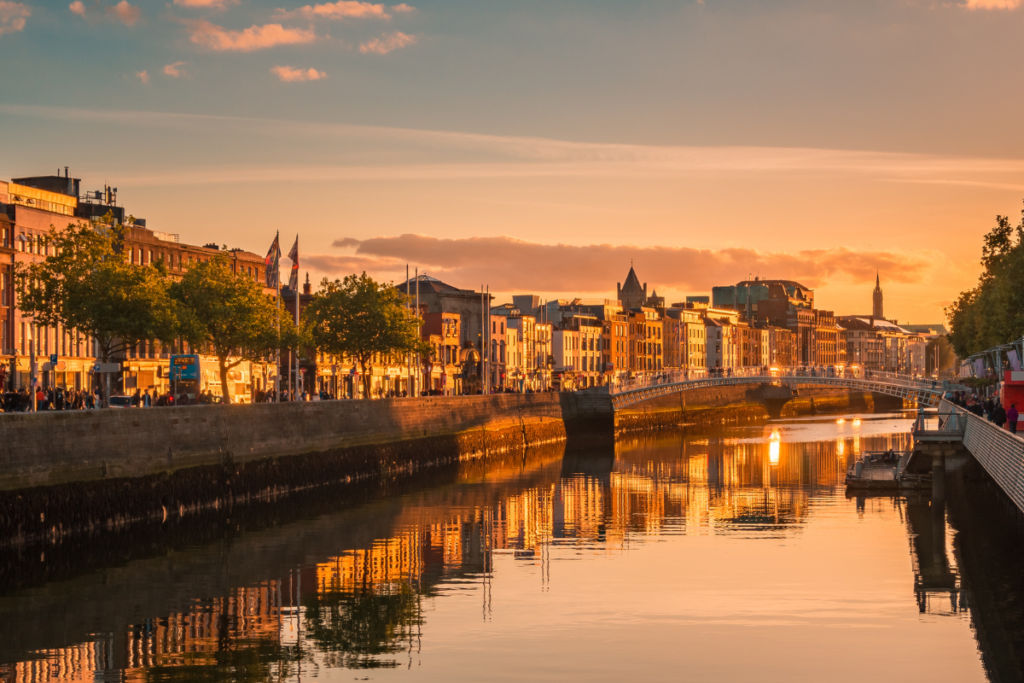
24. Dublin, Ireland
Dublin, the capital of Ireland, is a city with a rich literary tradition and vibrant energy. The River Liffey, which runs through the city, is home to iconic landmarks such as the Ha’penny Bridge and the modern Samuel Beckett Bridge. Dublin’s literary heritage is celebrated through the works of famous writers like James Joyce, Samuel Beckett, and W.B. Yeats, with landmarks such as the Dublin Writers Museum and the James Joyce Centre. Dublin boasts historic pubs such as Temple Bar, which offer a warm and lively atmosphere often accompanied by traditional Irish music. The Guinness Storehouse is a popular attraction, providing a brewery tour and a taste of Ireland’s most famous stout, with panoramic views at the Gravity Bar. Additionally, Dublin’s green spaces, including St. Stephen’s Green and Phoenix Park, offer a peaceful retreat from the city’s hustle and bustle. Dublin is a captivating destination that embodies the spirit of Ireland, thanks to its friendly locals, rich history, and cultural vibrancy.

25. Munich, Germany
Munich, the capital of Bavaria, is a city that seamlessly blends traditional German culture with modernity. It is renowned for its annual Oktoberfest celebration, beer gardens, lederhosen, and lively folk festivals. The Marienplatz, with the New Town Hall and its famous Glockenspiel, is the heart of the city. The Munich Residenz, the former royal palace, showcases opulent rooms and an impressive treasury. Munich boasts a vibrant art scene, with museums such as the Alte Pinakothek, Neue Pinakothek, and Pinakothek der Moderne forming an art quarter that houses masterpieces from different eras. Additionally, Munich serves as a gateway to the stunning Bavarian Alps and picturesque lakes, making it an ideal base for exploring the natural beauty of the region. The city’s culinary offerings include traditional Bavarian dishes such as pretzels, Weisswurst, and schnitzel. Munich’s combination of historical charm, cultural richness, and natural beauty makes it an essential destination in Germany.
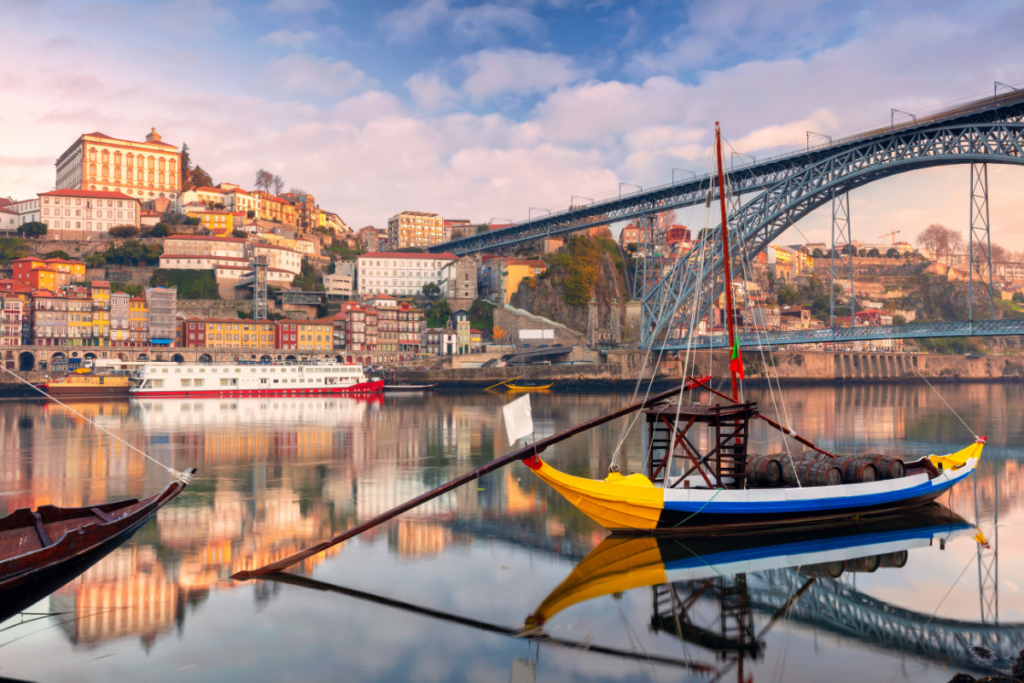
26. Porto, Portugal
Porto, the second-largest city in Portugal, is famous for its beautiful riverside scenery, historic architecture, and, of course, its port wine. The city’s historic center, Ribeira, is a UNESCO World Heritage site, characterized by narrow cobbled streets, colorful houses, and picturesque plazas. The iconic metal arch bridge, Dom Luís I Bridge, spans the Douro River, offering spectacular views of the city and the port wine cellars on the opposite bank in Vila Nova de Gaia. Porto’s São Bento Railway Station is famous for its beautiful azulejos, traditional blue-and-white tiled panels depicting historical scenes of Portugal. The city’s culinary scene is delightful, with local specialties such as francesinha, a hearty sandwich smothered in cheese and a beer-based sauce. Porto’s cultural offerings include the contemporary art museum Serralves and Casa da Música, a modern concert hall with an innovative design. Porto’s charm is derived from its combination of tradition and modernity, making it a captivating destination on Portugal’s northern coast.
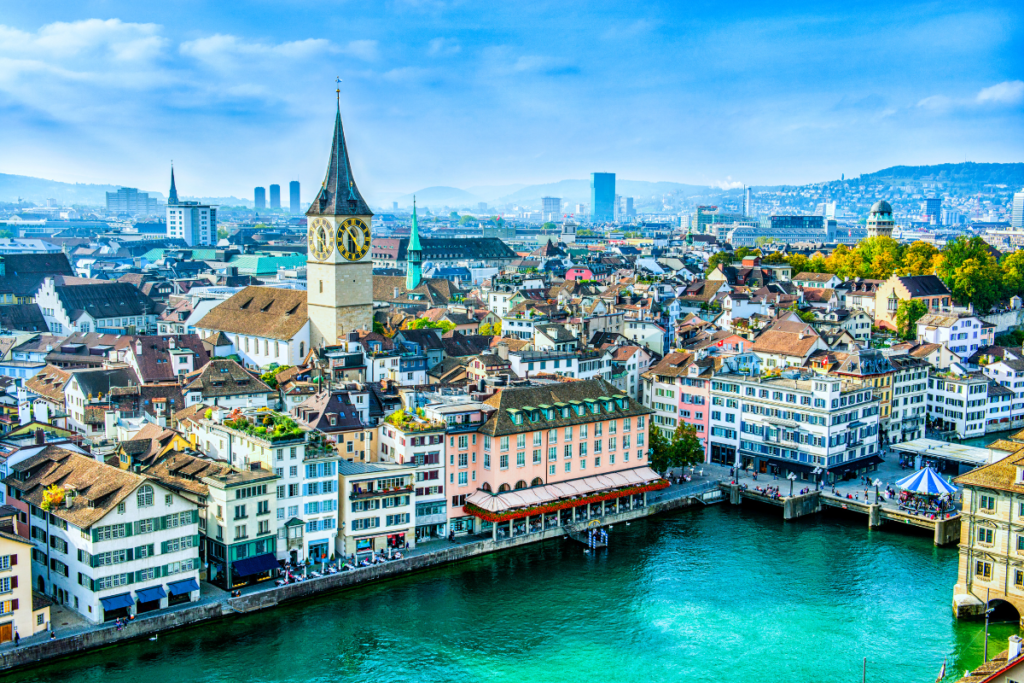
27. Zurich, Switzerland
Zurich is the largest city in Switzerland and is renowned for its well-preserved medieval Old Town, vibrant cultural scene, and stunning natural surroundings. The city is located on the shores of Lake Zurich and is framed by the snow-capped peaks of the Swiss Alps. Bahnhofstrasse, one of the world’s most exclusive shopping streets, is lined with luxury boutiques. Meanwhile, the historic Niederdorf district offers charming cafes and boutiques. Zurich boasts a rich cultural heritage, which is showcased in its many museums and galleries. The Kunsthaus Zurich, for instance, houses an impressive collection of modern art. The city’s culinary scene is diverse, offering traditional Swiss dishes as well as international cuisine. Zurich is also a green city, with numerous parks and gardens, such as the Chinese Garden and the Botanical Garden. The city’s efficient public transportation system, including its iconic trams, makes it easy to explore. Zurich is a must-visit destination in Switzerland due to its blend of natural beauty, historical charm, and modern amenities.

28. Oslo, Norway
Oslo, the capital of Norway, seamlessly blends urban life with outdoor adventures against a backdrop of fjords and forests. The city’s waterfront, recently redeveloped, boasts modern architecture, including the striking Oslo Opera House, which appears to rise from the waters of the Oslofjord. Oslo is a city rich in cultural attractions. For instance, the Vigeland Sculpture Park showcases the works of Gustav Vigeland, and the Viking Ship Museum houses well-preserved Viking ships. Oslo’s commitment to sustainability is evident in its green spaces and eco-friendly initiatives. The city also serves as a gateway to exploring Norway’s natural wonders, including the nearby Nordmarka forest for hiking and skiing. The Holmenkollen Ski Jump provides panoramic views of the city and hosts international ski events. Oslo’s culinary scene features traditional Norwegian dishes and an increasing focus on local and organic ingredients. Oslo is a city that offers a distinctive Scandinavian experience, blending culture, nature, and innovation.
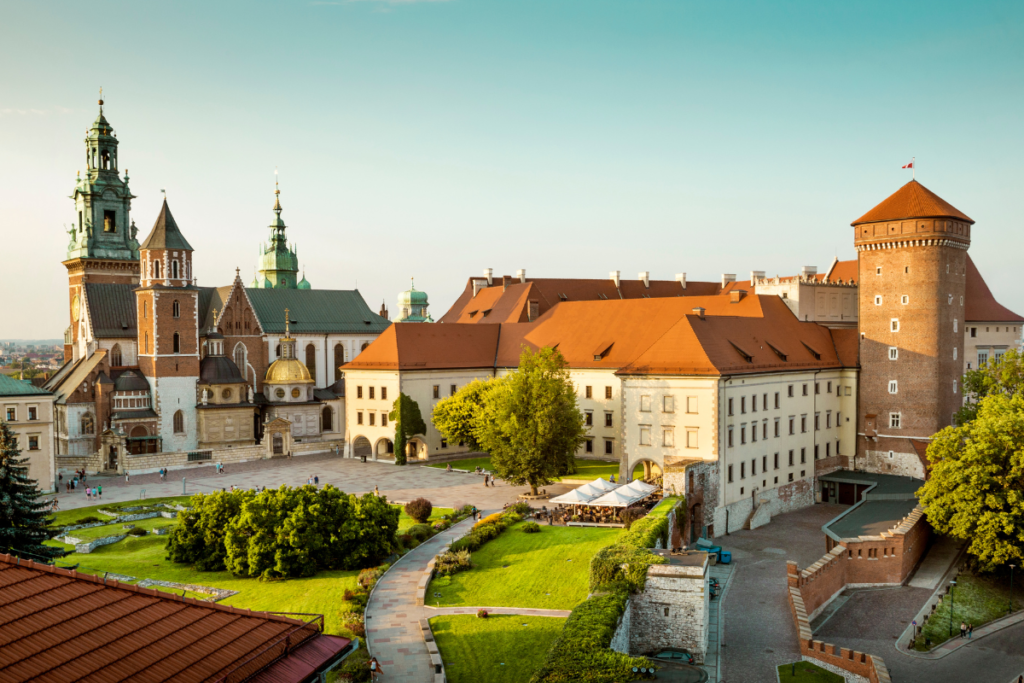
29. Krakow, Poland
Krakow is one of Poland’s oldest cities, famous for its well-preserved medieval core and Jewish quarter. At the heart of the city lies Rynek Główny, Europe’s largest market square, surrounded by historic townhouses, palaces, and churches. The Wawel Castle, a symbol of national pride, sits atop a hill overlooking the city and houses a collection of art, royal chambers, and the Wawel Cathedral. The Kazimierz district, which was once a thriving Jewish community, is now a lively area with a blend of galleries, cafes, and synagogues, including the Old Synagogue, one of the oldest in Poland. Krakow’s rich history is also marked by its proximity to the Auschwitz-Birkenau Memorial and Museum, which serves as a sobering reminder of the Holocaust. The city’s cultural scene is flourishing, with numerous festivals, theaters, and music venues. Krakow offers a variety of traditional Polish dishes, such as pierogi and kielbasa. The city’s rich history, culture, and lively urban atmosphere make it a captivating destination that embodies the spirit of Poland.

30. Helsinki, Finland
Helsinki, the capital of Finland, is a city where innovative design, a vibrant cultural scene, and natural beauty come together. Situated on the Baltic Sea, Helsinki boasts a unique blend of modern and neoclassical architecture, as seen in landmarks such as the Helsinki Cathedral and the Alvar Aalto-designed Finlandia Hall. The city’s design district is a hub for Finnish creativity, showcasing fashion, furniture, ceramics, and glassware. Helsinki’s connection to nature is evident through its numerous parks, waterfronts, and islands, including Suomenlinna, a sea fortress and UNESCO World Heritage site. The city’s culinary scene reflects its coastal location and Finnish traditions, offering fresh seafood and local specialties such as reindeer and wild berries. Helsinki’s cultural calendar is full of events, from the Helsinki Festival to the Flow Festival, celebrating music, art, and creativity. With its commitment to sustainability, design, and quality of life, Helsinki is a modern and dynamic city that offers a unique Nordic experience.

31. Seville, Spain
Seville, the capital of Andalusia, is a city that epitomizes the essence of southern Spain with its vibrant culture, rich history, and architectural marvels. The city’s heart is its Gothic cathedral, one of the largest in the world, which houses the tomb of Christopher Columbus and boasts the iconic Giralda bell tower. Adjacent to the cathedral is the Alcázar, a stunning example of Mudéjar architecture, with its intricate tilework and lush gardens. Seville’s old Jewish quarter, Barrio Santa Cruz, is a maze of narrow streets and charming plazas, perfect for exploring on foot. The city is famous for its lively festivals, such as the Feria de Abril, where locals don colorful traditional attire and celebrate with flamenco dancing, music, and horse parades. Seville’s culinary scene is a delight, with tapas bars serving local specialties like gazpacho, jamón ibérico, and fried fish. The Guadalquivir River adds to the city’s charm, offering picturesque views and opportunities for boat rides. Seville’s warmth, artistry, and zest for life make it a captivating destination that embodies the spirit of Andalusia.

32. Tallinn, Estonia
Tallinn, the capital of Estonia, is a city where medieval history and digital innovation coexist harmoniously. The Old Town, a UNESCO World Heritage site, is a perfectly preserved medieval city with cobblestone streets, Gothic spires, and ancient walls. The Town Hall Square is the heart of the Old Town, surrounded by historic buildings and lively cafes. Tallinn’s Toompea Hill offers panoramic views of the city and is home to the Alexander Nevsky Cathedral, an architectural masterpiece. As a contrast to its historical charm, Tallinn is also known as a tech-savvy city, often referred to as the Silicon Valley of Europe, with a thriving startup scene. The city’s culinary landscape is a blend of traditional Estonian flavors and modern gastronomy. Tallinn’s cultural calendar is filled with festivals, concerts, and art exhibitions, reflecting its vibrant arts scene. The city’s green spaces, such as Kadriorg Park, provide a peaceful escape with beautiful gardens and the baroque Kadriorg Palace. Tallinn’s unique combination of medieval heritage and contemporary lifestyle makes it a fascinating destination to explore.
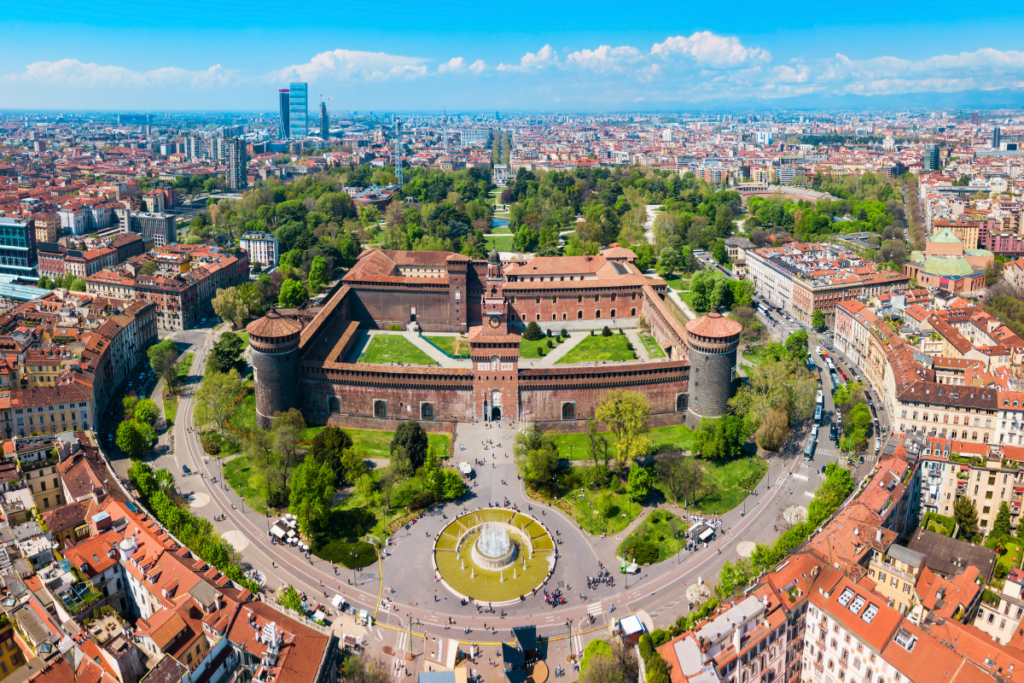
33. Milan, Italy
Milan is Italy’s fashion and design capital, blending historical elegance with modern sophistication. The city boasts the magnificent Gothic cathedral, the Duomo di Milano, which took nearly six centuries to complete. Additionally, the Galleria Vittorio Emanuele II, one of the world’s oldest shopping arcades, is a stunning example of 19th-century glass and iron architecture. Milan is known for its world-renowned La Scala opera house, which has hosted some of the most famous performers in the world. The city’s artistic heritage is also evident in Leonardo da Vinci’s masterpiece, ‘The Last Supper,’ which is housed in the Convent of Santa Maria delle Grazie. Additionally, Milan’s Quadrilatero della Moda fashion district is a mecca for luxury shopping and cutting-edge design. Milan’s culinary scene is diverse, offering traditional Milanese dishes like risotto alla milanese alongside innovative cuisine from Michelin-starred chefs. The city’s blend of historical treasures and contemporary lifestyle makes it a dynamic and stylish destination that captivates visitors from around the world.
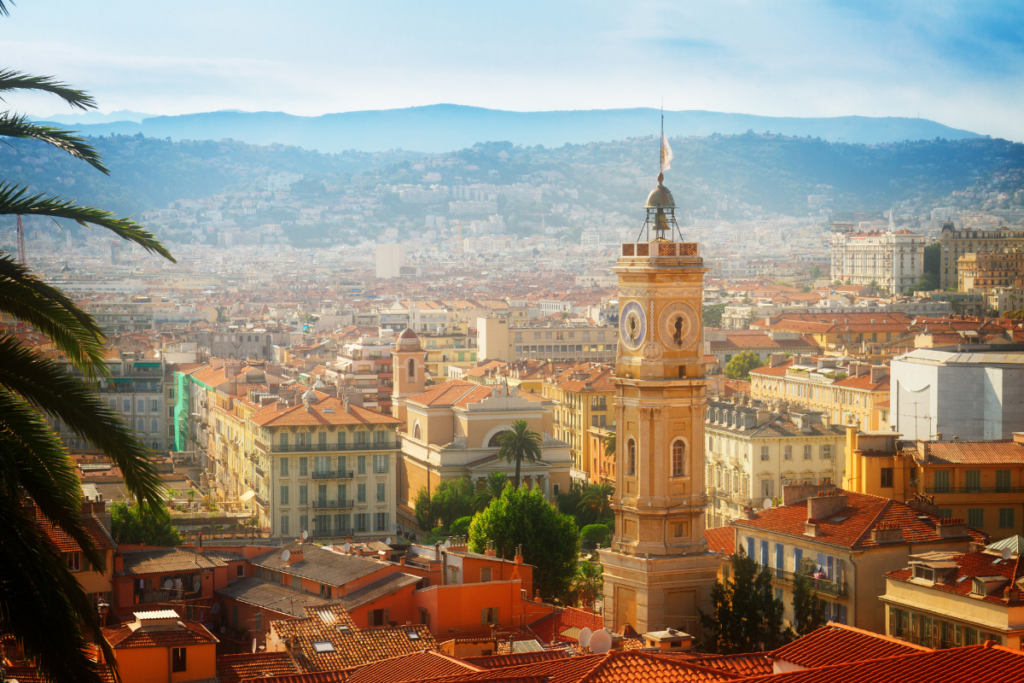
34. Nice, France
Nestled on the French Riviera, Nice is a captivating city with stunning seaside promenades, vibrant markets, and a blend of French and Italian influences. The Promenade des Anglais, a sweeping boulevard along the Mediterranean coast, is lined with palm trees and elegant Belle Époque buildings. The Old Town, or Vieux Nice, is a maze of narrow streets filled with colorful buildings, lively squares, and bustling markets, such as the Cours Saleya flower market. The city’s mild climate and clear blue waters have made it a popular destination for artists and writers, such as Henri Matisse, whose works are exhibited in the Musée Matisse. The hilltop park of Colline du Château provides panoramic views of Nice’s skyline and the Baie des Anges. Nice’s cuisine reflects its Mediterranean location, with dishes like salade niçoise and socca. The city of Nice boasts a rich cultural calendar, featuring events such as the world-renowned Nice Carnival. Its unique combination of natural beauty, artistic heritage, and joie de vivre make Nice a true gem of the Côte d’Azur.

35. Split, Croatia
Split is a coastal city in Croatia known for its ancient Roman heritage, vibrant waterfront, and stunning Adriatic scenery. The heart of the city is Diocletian’s Palace, a UNESCO World Heritage site and one of the most impressive Roman ruins in existence. The palace was built in the 4th century for Emperor Diocletian and now forms the bustling core of the Old Town, with its labyrinthine streets home to shops, cafes, and residences. The Riva promenade is a vibrant area along the harbour, ideal for immersing oneself in the Mediterranean ambiance, complete with palm trees and stunning views of the sea and islands. Meanwhile, Split’s Marjan hill provides a verdant sanctuary and sweeping panoramas of the city and surrounding waters. The city’s cuisine is a reflection of its Dalmatian roots, with emphasis on fresh seafood, olive oil, and local wines. Split is an ideal base for exploring the natural wonders of the beautiful islands of Hvar, Brač, and Vis, located in the Adriatic. Its captivating destination on Croatia’s Dalmatian coast blends ancient history, modern energy, and stunning natural beauty.
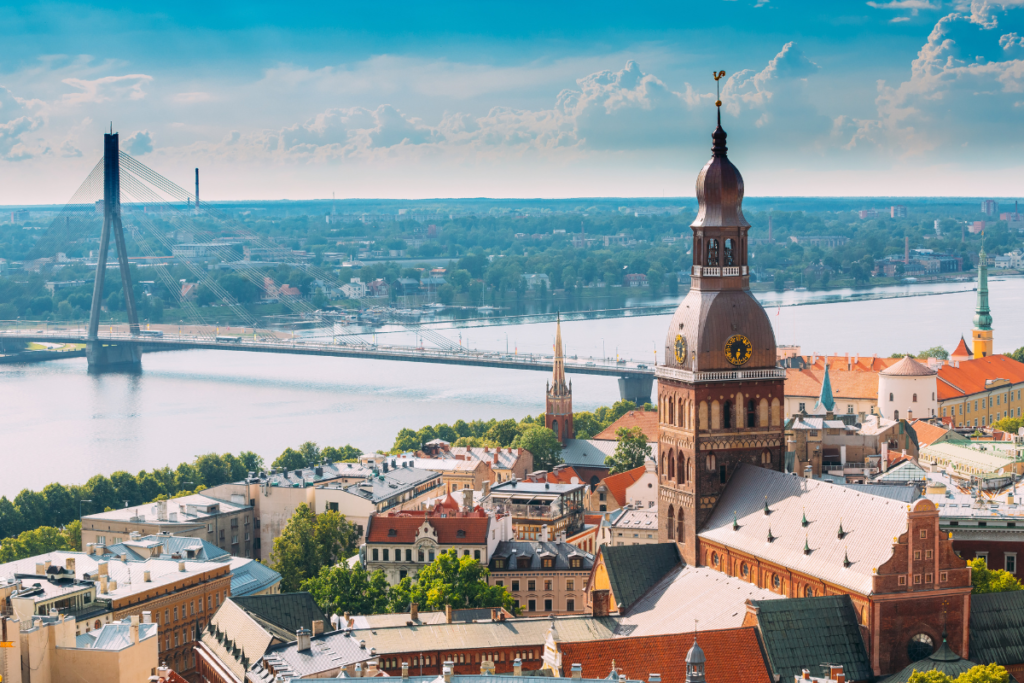
36. Riga, Latvia
Riga, the capital of Latvia, is a city that blends a rich historical tapestry with a lively contemporary culture. The city’s Old Town, a UNESCO World Heritage site, is a picturesque maze of cobblestone streets, medieval buildings, and art nouveau architecture. The Riga Central Market, housed in former Zeppelin hangars, is a bustling hub of local produce, meats, and artisanal goods. The Freedom Monument, which symbolises Latvia’s struggle for independence, stands tall in the city centre. Riga’s wooden architecture, particularly in the Pārdaugava district, adds a unique charm to its urban landscape. The city is also renowned for its vibrant nightlife, offering a variety of bars, clubs, and cultural events. Riga’s location on the Baltic Sea provides opportunities for beach excursions to nearby Jūrmala. Riga is an alluring destination in the Baltic region due to its rich historical heritage, stunning architecture, and vibrant culture.
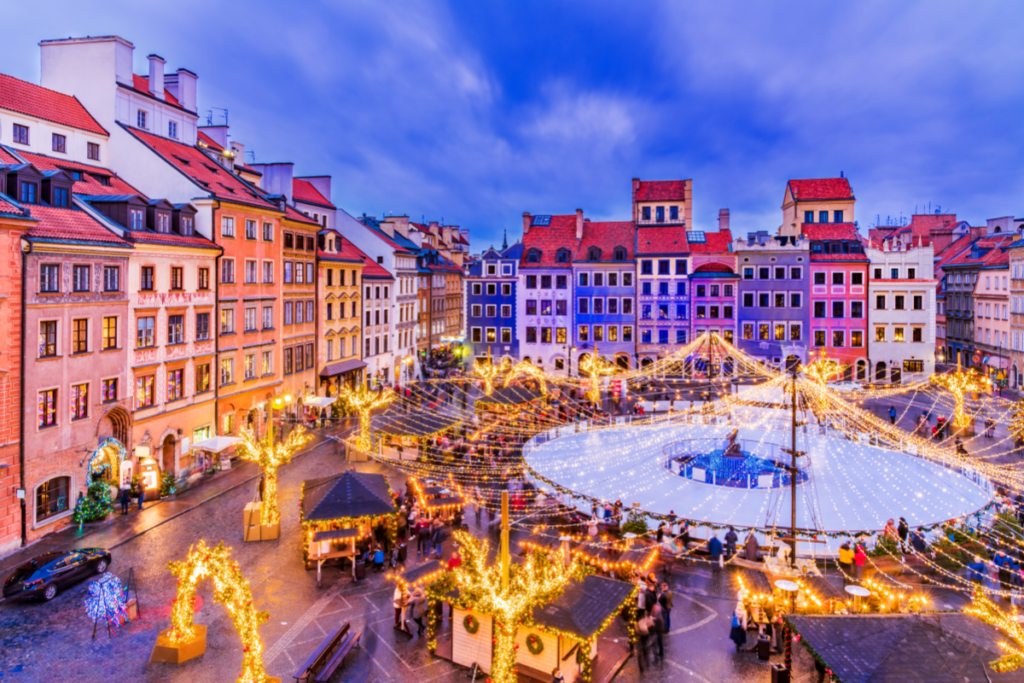
37. Warsaw, Poland
Warsaw, the capital of Poland, is a vibrant metropolis with a rich cultural heritage. The city’s Old Town, reconstructed after World War II, is a UNESCO World Heritage site and a testament to the resilience of the Polish people. The Royal Castle, with its blend of architectural styles, and the colorful Market Square are highlights of this historic area. The Palace of Culture and Science is a towering symbol of the city’s post-war reconstruction. It offers panoramic views from its observation deck. Warsaw’s modern side is evident in its skyscrapers, bustling business districts, and the Copernicus Science Centre. This state-of-the-art facility engages visitors of all ages. The city’s green spaces, such as Łazienki Park with its beautiful palace and gardens, provide a peaceful escape from urban life. Warsaw’s museums, such as the POLIN Museum of the History of Polish Jews and the Warsaw Uprising Museum, reflect the city’s rich history. Warsaw is a city that blends history, culture, and modernity, telling a compelling story of survival and renewal.
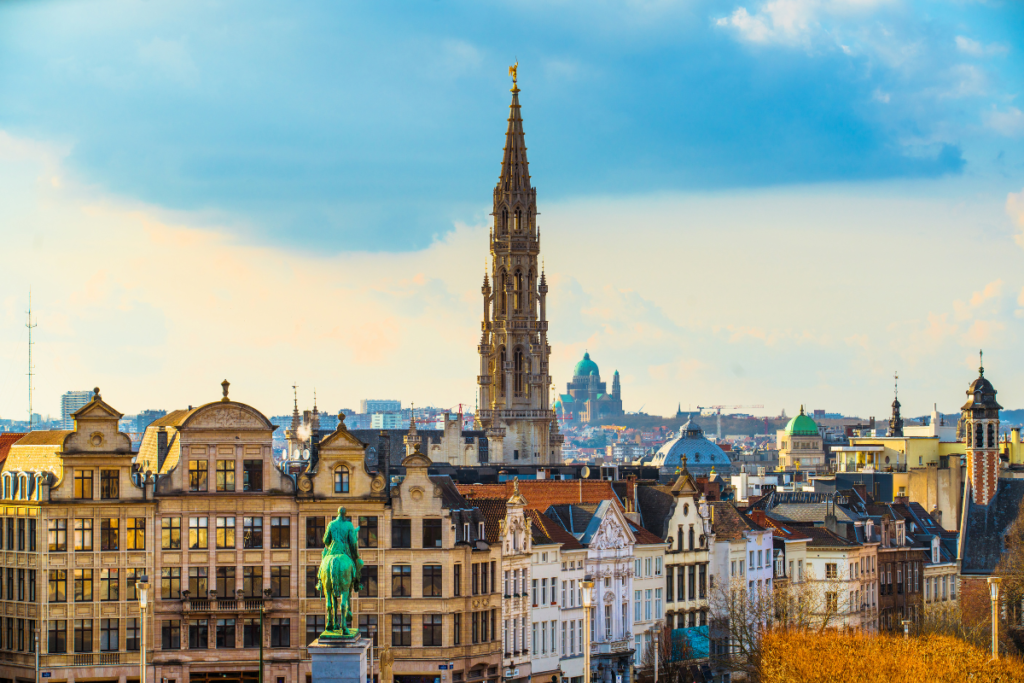
38. Brussels, Belgium
Brussels is the capital of Belgium and the administrative centre of the European Union. The city combines international flair with local charm. The Grand Place, a UNESCO World Heritage site, is a stunning square surrounded by ornate guildhalls and the impressive Gothic Town Hall. The city’s mascot, Manneken Pis, is a small bronze statue of a boy that has become an emblem of Brussels’ irreverent humour. Brussels is famous for its culinary delights, such as Belgian chocolates, waffles, and over 800 varieties of beer. The Atomium, a futuristic structure constructed for the 1958 World’s Fair, provides panoramic views and exhibits on science and design. The Royal Palace and the Parc du Cinquantenaire showcase the city’s grandeur, while the Marolles district, with its flea market and antique shops, reflects its bohemian spirit. Brussels boasts a vibrant arts scene, showcased through its numerous galleries, theaters, and the Belgian Comic Strip Center, which celebrates the country’s rich comic book heritage. The city’s mix of historic sites, gastronomic pleasures, and cultural diversity make it a dynamic and welcoming destination at the crossroads of Europe.
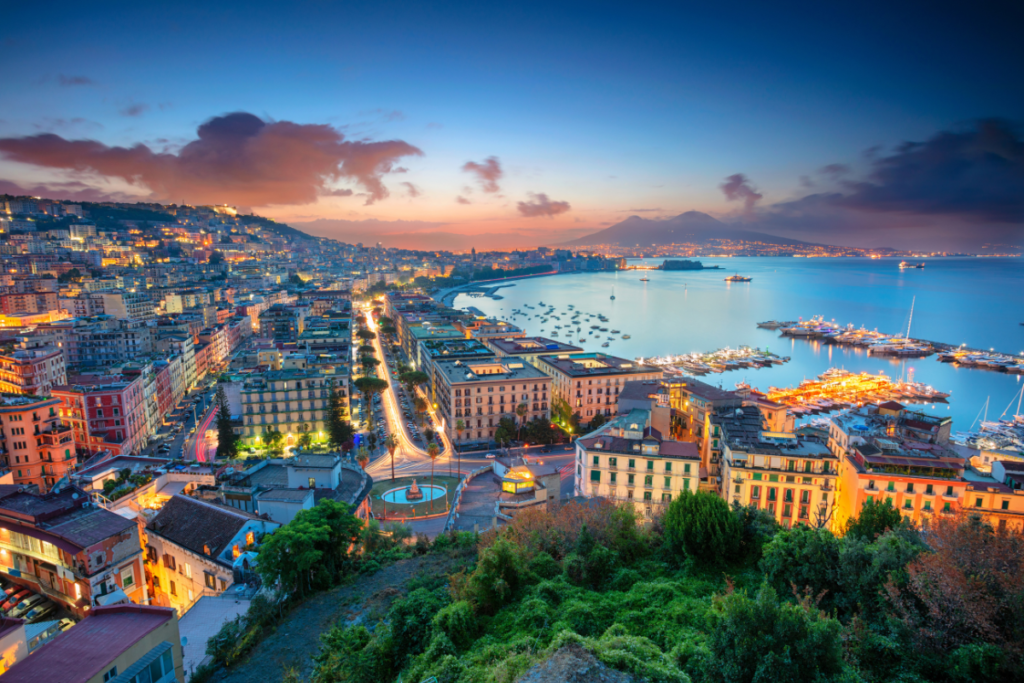
39. Naples, Italy
Naples is the capital of the Campania region, a city known for its vibrant energy, rich history, and culinary tradition. Situated on the Bay of Naples with Mount Vesuvius as its backdrop, the city boasts lively streets, historic architecture, and stunning coastal views. The historic center of Naples is a UNESCO World Heritage site, featuring narrow alleys, baroque churches, and underground catacombs. Naples is renowned as the birthplace of pizza, and no visit is complete without savouring a traditional Neapolitan pizza in one of the city’s many pizzerias. The National Archaeological Museum houses an impressive collection of artefacts from nearby Pompeii and Herculaneum, ancient cities destroyed by the eruption of Vesuvius. The city’s vibrant markets, such as Pignasecca and Porta Nolana, offer a glimpse into local life and cuisine. Naples is a gateway to exploring the Amalfi Coast, Capri, and the Sorrento Peninsula. Its cultural heritage, culinary delights, and natural beauty make it a captivating city that stimulates the senses and touches the heart.
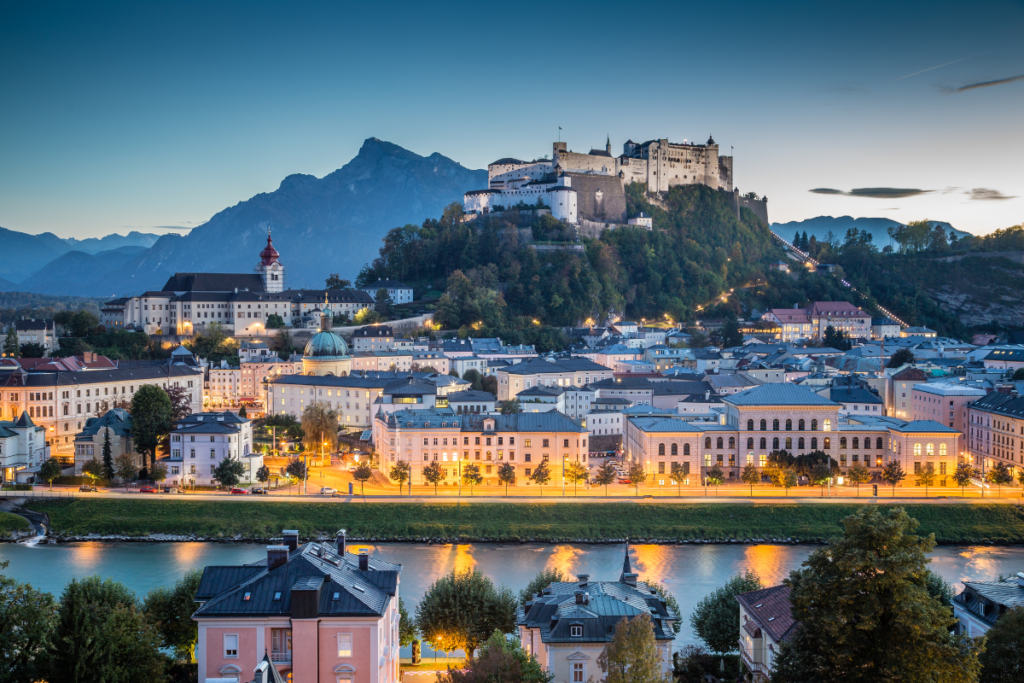
40. Salzburg, Austria
Salzburg is a city that blends Baroque architecture with a stunning natural landscape. It is nestled in the Alps and bisected by the Salzach River. The city celebrates its musical heritage with concerts, festivals, and the preserved Mozart’s Birthplace museum. Salzburg is also known as the birthplace of Wolfgang Amadeus Mozart. The Old Town of Salzburg, which is listed as a UNESCO World Heritage Site, is decorated with medieval and Baroque buildings. Among them is the impressive Hohensalzburg Fortress, which provides panoramic views of the city and the surrounding mountains. The Mirabell Palace and Gardens, with their well-maintained lawns and intricate statues, are a testament to Salzburg’s elegance. The Salzburg Festival, an annual event, is a highlight of the city’s cultural calendar, featuring opera, drama, and classical music performances. The Hellbrunn Palace, located nearby, offers a delightful escape with its trick fountains and beautiful park. Salzburg’s culinary scene is also charming, featuring traditional Austrian dishes such as schnitzel and strudel. Surrounded by the scenic beauty of the Alps and steeped in a rich artistic tradition, Salzburg enchants visitors with its music, history, and natural splendor.

41. Valencia, Spain
Valencia is Spain’s third-largest city, located along the Mediterranean coast. Its Old Town boasts the stunning Valencia Cathedral, which claims to house the Holy Grail, and the UNESCO-listed La Lonja de la Seda, a masterpiece of Gothic architecture. The Turia Gardens wind through the city in the former riverbed of the Turia River, offering a peaceful retreat with lush landscapes and sports facilities. Valencia is renowned for being the birthplace of paella, and the city boasts a delightful culinary scene with numerous restaurants serving this iconic dish and other Valencian specialties. The City of Arts and Sciences, an architectural complex designed by Santiago Calatrava, is a symbol of Valencia’s contemporary spirit, featuring a science museum, an opera house, and an oceanographic park. Additionally, the city’s beaches, such as Malvarrosa and El Saler, provide the perfect setting for relaxation and water sports. Valencia’s combination of historical charm, innovative architecture, and Mediterranean lifestyle makes it a captivating destination that embodies the essence of Spain.
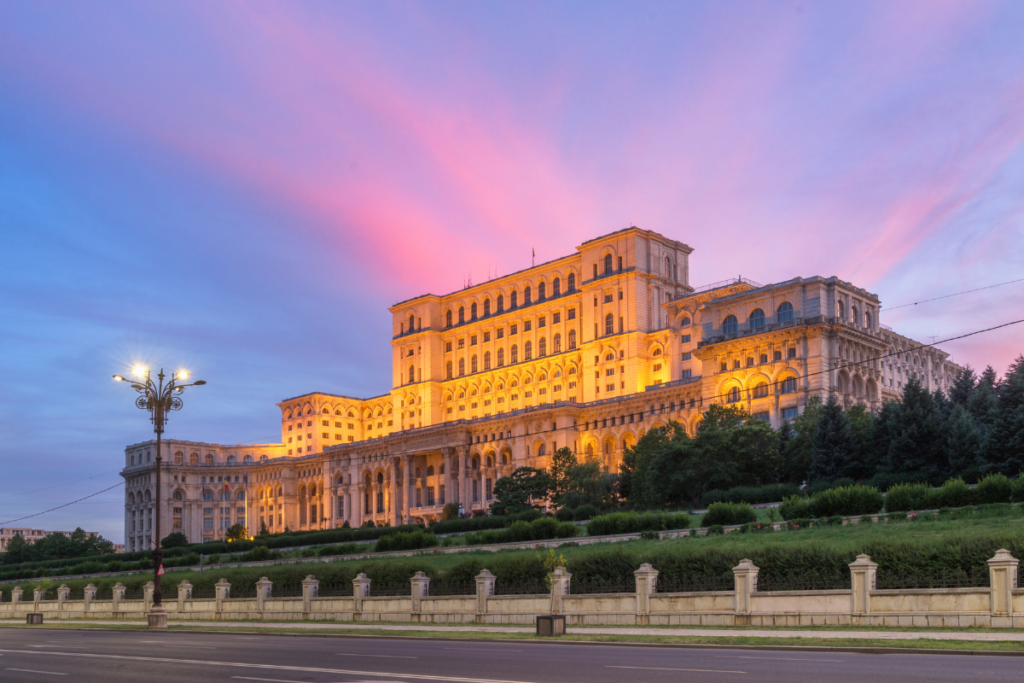
42. Bucharest, Romania
Bucharest, the capital of Romania, is a city that blends a rich historical heritage with the energy of modern urban life. It was often called ‘Little Paris’ in the early 20th century due to its wide boulevards, Belle Époque buildings, and a Triumphal Arch reminiscent of its French counterpart. The Palace of the Parliament, a colossal structure built during the communist era, is one of the largest administrative buildings globally and a symbol of Bucharest’s complex past. The Lipscani district, also known as the Old Town, is the hub of Bucharest’s nightlife. It features a lively mix of bars, restaurants, and clubs set among restored medieval buildings. For those seeking a peaceful escape from the urban bustle, Bucharest’s green spaces, such as Herăstrău Park and Cișmigiu Gardens, are ideal. The city’s cultural scene is also vibrant, with numerous museums, theaters, and galleries showcasing Romanian art and history. Bucharest’s architecture is a blend of styles ranging from neoclassical to brutalist, reflecting its diverse influences and tumultuous history. This makes it an intriguing destination for those exploring Eastern Europe.
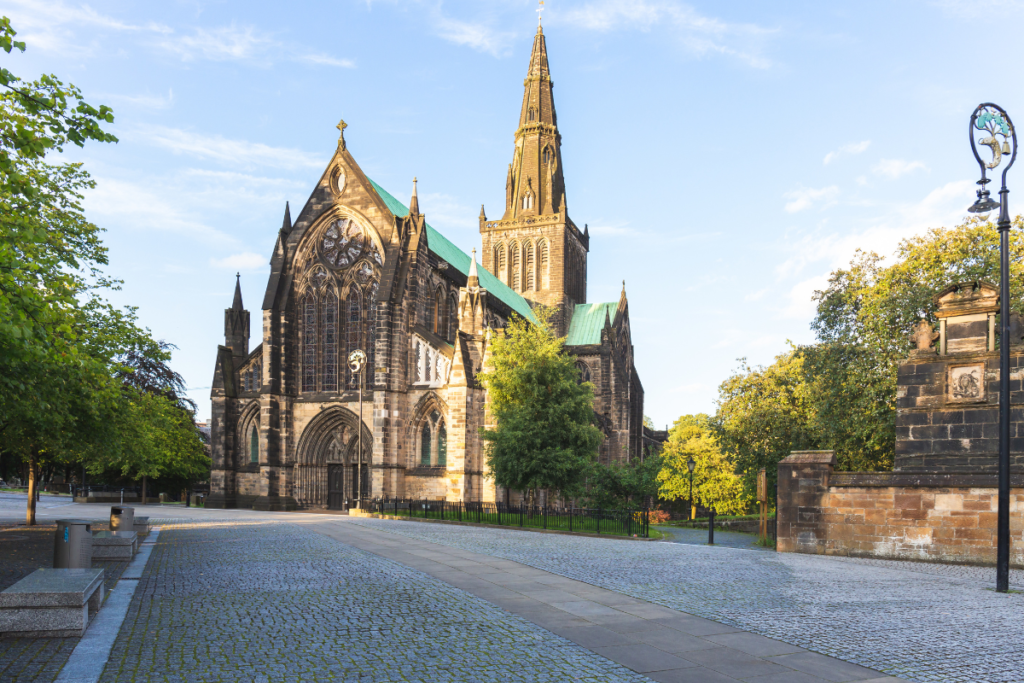
43. Glasgow, Scotland
Glasgow is Scotland’s largest city, known for its rich industrial heritage, vibrant cultural scene, and striking architecture. The city has transformed from an industrial powerhouse to a center of creativity and innovation, as evidenced by its thriving arts and music scene, with numerous galleries, theaters, and live music venues. The Glasgow School of Art, designed by Charles Rennie Mackintosh, is a masterpiece of Art Nouveau architecture and a symbol of the city’s artistic legacy. The Riverside Museum and Kelvingrove Art Gallery and Museum exhibit Glasgow’s history and cultural treasures. The West End is a bohemian area with fashionable cafes, vintage shops, and the picturesque Botanic Gardens. Glasgow’s culinary scene is diverse, offering traditional Scottish dishes and international cuisine. The city’s friendly locals, known as Glaswegians, contribute to its warm and welcoming atmosphere. Glasgow is a vibrant and captivating destination in Scotland, offering a unique blend of historical landmarks and contemporary culture.
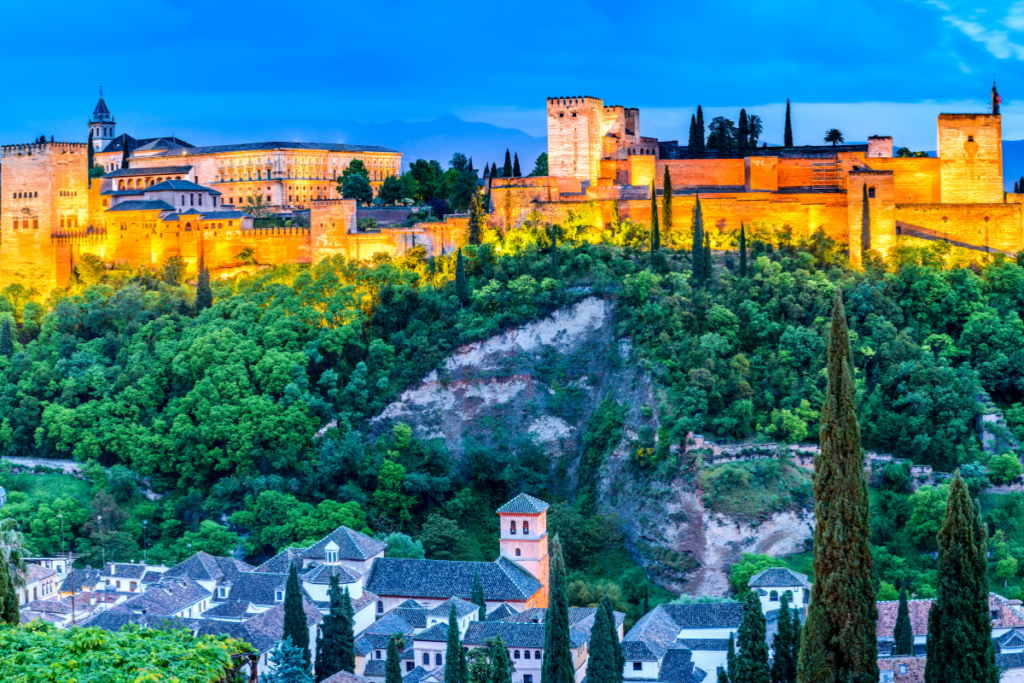
44. Granada, Spain
Located in the Andalusian region of Spain, Granada is a captivating city with a vibrant culture and a rich Moorish heritage. The Alhambra, a UNESCO World Heritage site, is a magnificent palace-fortress complex that stands as a testament to the artistic and architectural prowess of the Nasrid dynasty. Its intricate stonework, serene courtyards, and lush gardens offer a glimpse into Spain’s Islamic past. The Albayzín is Granada’s old Moorish quarter, characterised by narrow streets and whitewashed houses. From the Mirador de San Nicolás, there are spectacular views of the Alhambra. The city’s cathedral, built in the Gothic and Renaissance styles, is a symbol of the Christian Reconquista. Granada’s streets are lively and filled with tapas bars serving traditional Andalusian dishes accompanied by a complimentary drink. Its cultural scene is vibrant, featuring flamenco shows, music festivals, and artisan markets that showcase the local heritage. Granada is a captivating destination that embodies the spirit of Andalusia. The city’s blend of Moorish history and architectural beauty adds to its lively culture.
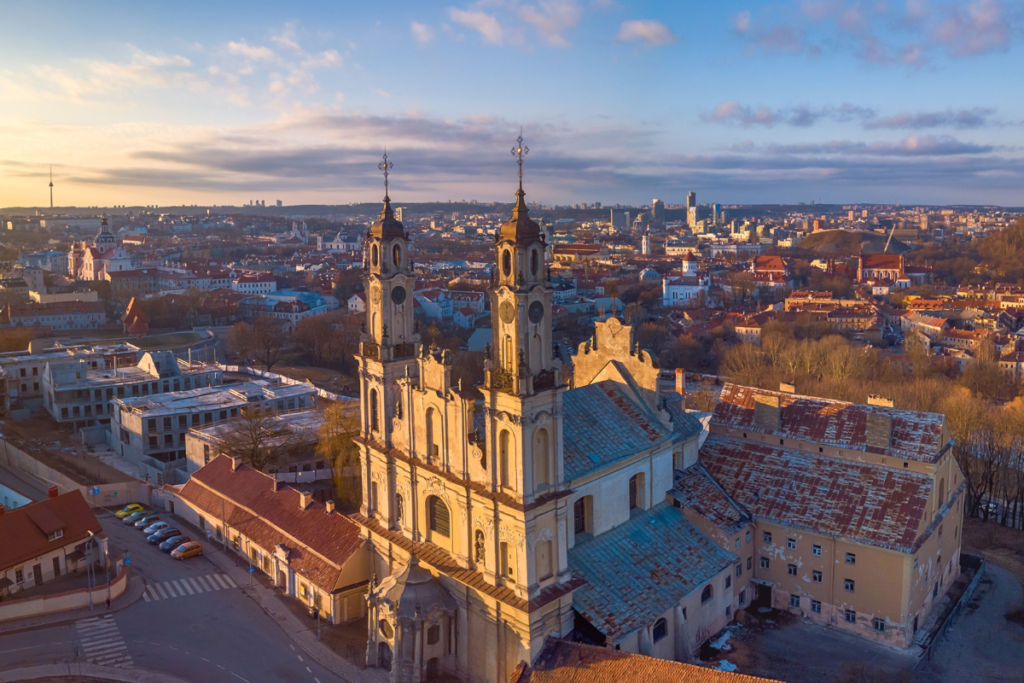
45. Vilnius, Lithuania
Vilnius, the capital of Lithuania, is a charming city with a well-preserved medieval Old Town, which is a UNESCO World Heritage site. The city’s skyline is punctuated by the Gothic spires of St. Anne’s Church and the Baroque elegance of the Church of St. Peter and St. Paul. The Gediminas Tower, perched on a hill, offers panoramic views of the city and its red-tiled roofs. Vilnius boasts a vibrant cultural life, with a thriving arts scene, numerous theaters, and lively festivals. The Užupis district, a bohemian quarter with a playful spirit, has declared itself an independent republic and is home to artists and creative minds. Vilnius’s culinary scene reflects its diverse history, with a mix of Lithuanian, Polish, and Jewish influences. The city’s green spaces, such as Vingis Park and the Bernardine Gardens, provide a peaceful escape from urban life. Vilnius is a hidden gem in Eastern Europe, blending historical charm, artistic vibrancy, and natural beauty.
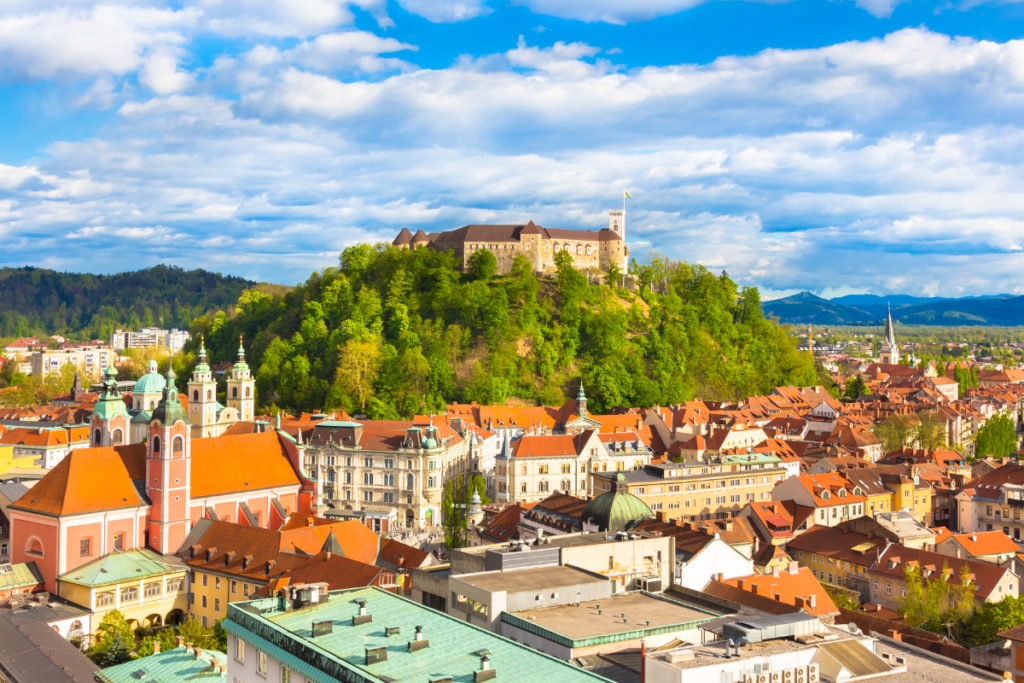
46. Ljubljana, Slovenia
Ljubljana, the capital of Slovenia, is a charming city with picturesque bridges, an emerald-green river, and a vibrant cultural scene. The city’s symbol, Ljubljana Castle, perched on a hill, offers stunning views and a glimpse into the region’s history. The heart of the city is the Triple Bridge, designed by renowned architect Jože Plečnik, which connects the historic Old Town to the modern city. Ljubljana’s city centre is a car-free zone, making it an ideal location for pedestrians and cyclists. The area is bustling with cafes, markets, and street performers. The Central Market is a hub of local produce and culinary delights, reflecting Slovenia’s rich agricultural heritage. Tivoli Park, the city’s largest green space, provides a serene escape with its landscaped gardens and walking trails. Ljubljana’s cultural calendar is packed with festivals, concerts, and art exhibitions, showcasing the city’s creative spirit. With its combination of natural beauty, architectural elegance, and vibrant atmosphere, Ljubljana is a city that encourages exploration and provides a distinctive Slovenian experience.
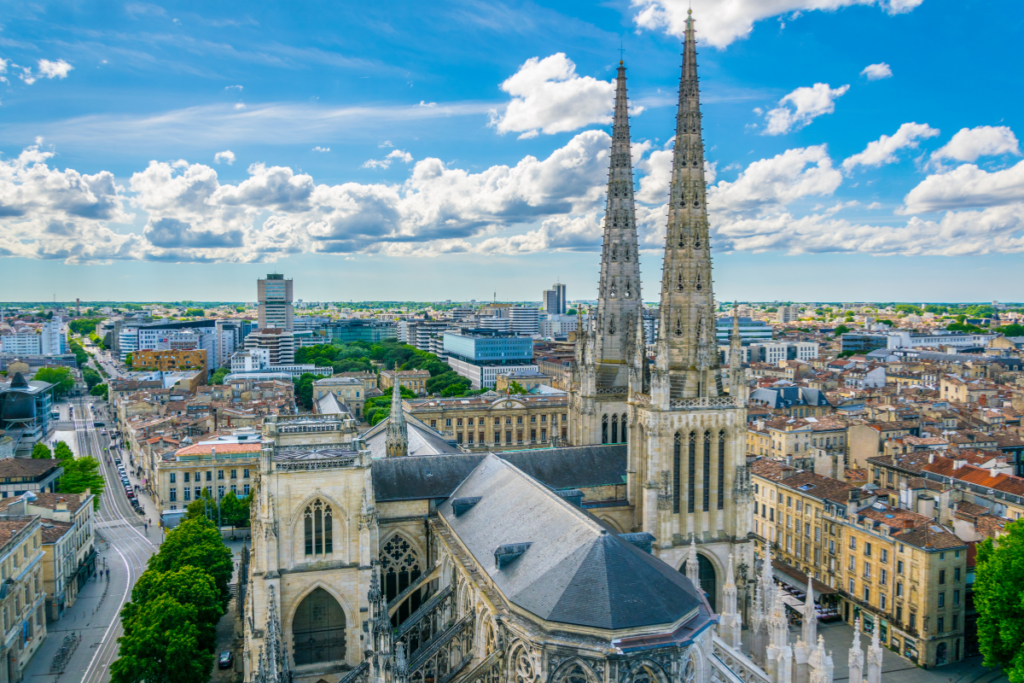
47. Bordeaux, France
Bordeaux is the wine capital of the world, blending classical elegance with a vibrant contemporary lifestyle. It is situated in the heart of France’s famous wine region and is renowned for its exquisite vineyards, prestigious châteaux, and rich oenological heritage. The city’s historic center, a UNESCO World Heritage site, is adorned with grandiose 18th-century architecture, including the Place de la Bourse with its stunning reflection in the Miroir d’eau. The Bordeaux Cathedral, featuring soaring spires, is a Gothic architectural masterpiece. The Cité du Vin is a contemporary cultural facility that celebrates the history and culture of wine through immersive exhibitions and tastings. Bordeaux’s culinary scene is delightful, with a focus on local ingredients and regional specialties such as canelés and entrecôte à la bordelaise. The city’s quays along the Garonne River offer picturesque walks and lively waterfront dining. Bordeaux’s combination of historical grandeur, wine culture, and gastronomic excellence makes it a captivating city for the senses and the soul.
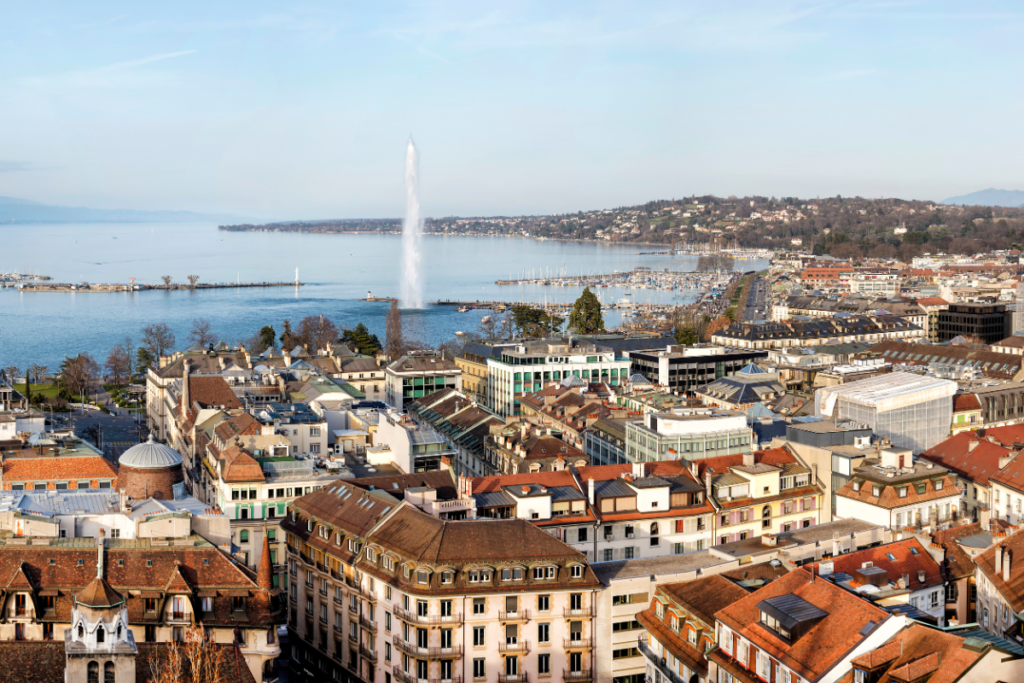
48. Geneva, Switzerland
Geneva is a city that represents international diplomacy and cosmopolitan flair. It is located between the Alps and the Jura mountains on the shores of Lake Geneva. The United Nations and the Red Cross are headquartered in Geneva, making it a hub for global governance and humanitarian efforts. The city’s vitality is symbolized by the iconic Jet d’Eau, a towering water fountain that is a popular sight on the lakefront. Geneva’s Old Town features cobblestone streets and historic buildings, including the St. Pierre Cathedral and the Maison Tavel, the city’s oldest house turned museum. The city’s parks, such as Jardin Anglais and Parc des Bastions, offer peaceful retreats with beautiful floral displays and shaded walkways. Geneva is renowned for its watchmaking tradition, with luxury boutiques and the Patek Philippe Museum showcasing this precision art. Geneva boasts a rich cultural scene, with the Grand Théâtre de Genève showcasing opera and ballet, and the Musée d’Art et d’Histoire exhibiting a diverse collection of art and artifacts. The city’s international cuisine, scenic beauty, and dedication to peace and innovation make it a truly unique and inspiring destination.
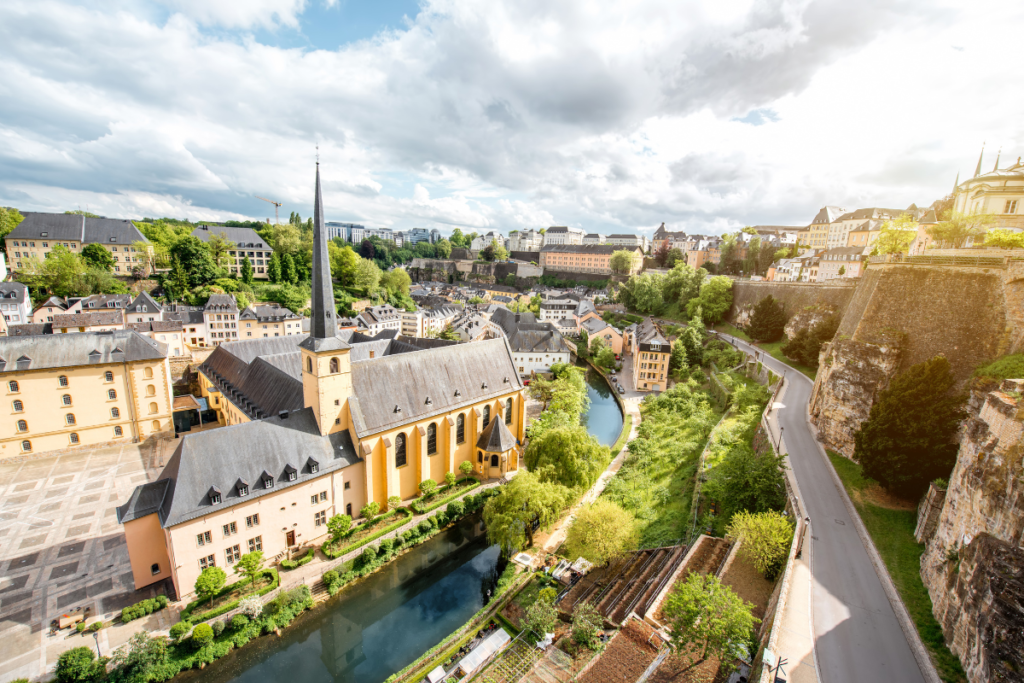
49. Luxembourg City, Luxembourg
Luxembourg City, the capital of the Grand Duchy of Luxembourg, is a city that combines medieval fortifications with modern European sophistication. The city’s Old Quarter, a UNESCO World Heritage site, is a network of cobbled streets, ancient ramparts, and picturesque bridges perched atop cliffs and valleys. The Bock Casemates, a series of underground tunnels and fortifications, offer a glimpse into the city’s strategic military importance. The Grand Ducal Palace, which has a Renaissance facade, serves as the official residence of the Grand Duke of Luxembourg and represents the nation’s monarchy. The city’s modern side is displayed in the Kirchberg district, which houses European Union institutions, contemporary museums such as the Mudam (Museum of Modern Art Grand-Duc Jean), and impressive architecture. Luxembourg City’s green areas, such as the Pétrusse Valley and the Parc de Merl, offer peaceful urban retreats. Luxembourg City’s culinary scene reflects its multicultural population, offering a diverse selection of international and local dishes. The city’s unique blend of history, cosmopolitan lifestyle, and natural beauty makes it a captivating destination in the heart of Europe.

50. Belgrade, Serbia
Belgrade, the capital of Serbia, is a city with a vibrant energy, rich history, and a unique blend of architectural styles. Situated at the confluence of the Danube and Sava rivers, Belgrade is renowned for its lively nightlife, with floating river clubs and bars that come alive after dark. The city’s historic core, Kalemegdan Fortress, offers panoramic views and includes a park and several museums. The pedestrian street of Knez Mihailova is flanked by historic buildings, shops, and cafes, leading to the bustling Republic Square. Belgrade’s bohemian quarter, Skadarlija, resembles Montmartre in Paris, with its cobblestone streets, traditional taverns, and live music. The Church of Saint Sava, one of the largest Orthodox churches globally, is a prominent landmark with its impressive dome. Belgrade’s cultural scene is diverse, with numerous theaters, galleries, and cultural centers. Belgrade’s cuisine reflects its position as a crossroads, blending Balkan, Mediterranean, and Ottoman influences. The city’s resilience, lively spirit, and rich cultural tapestry make it a dynamic and intriguing destination.

